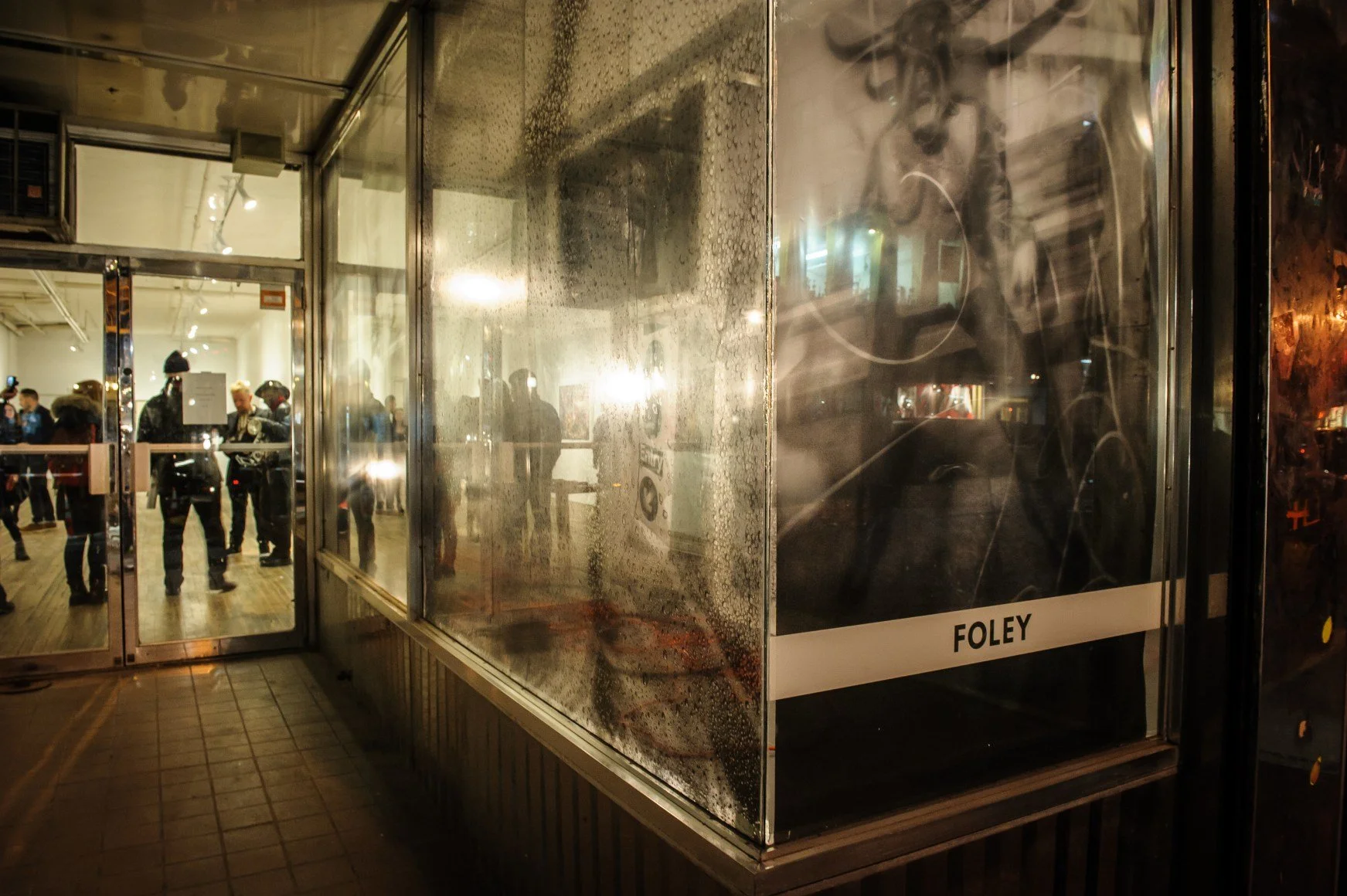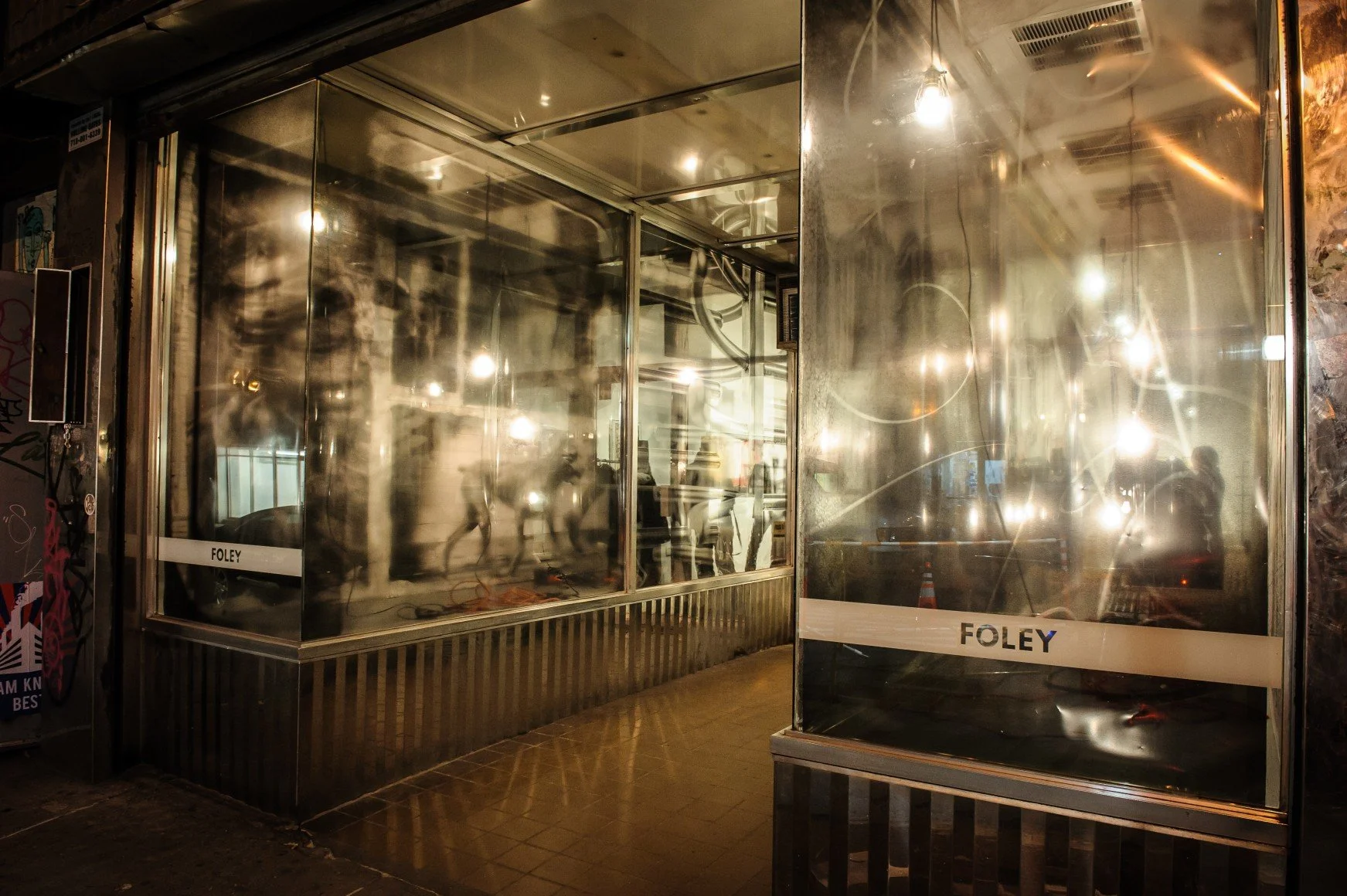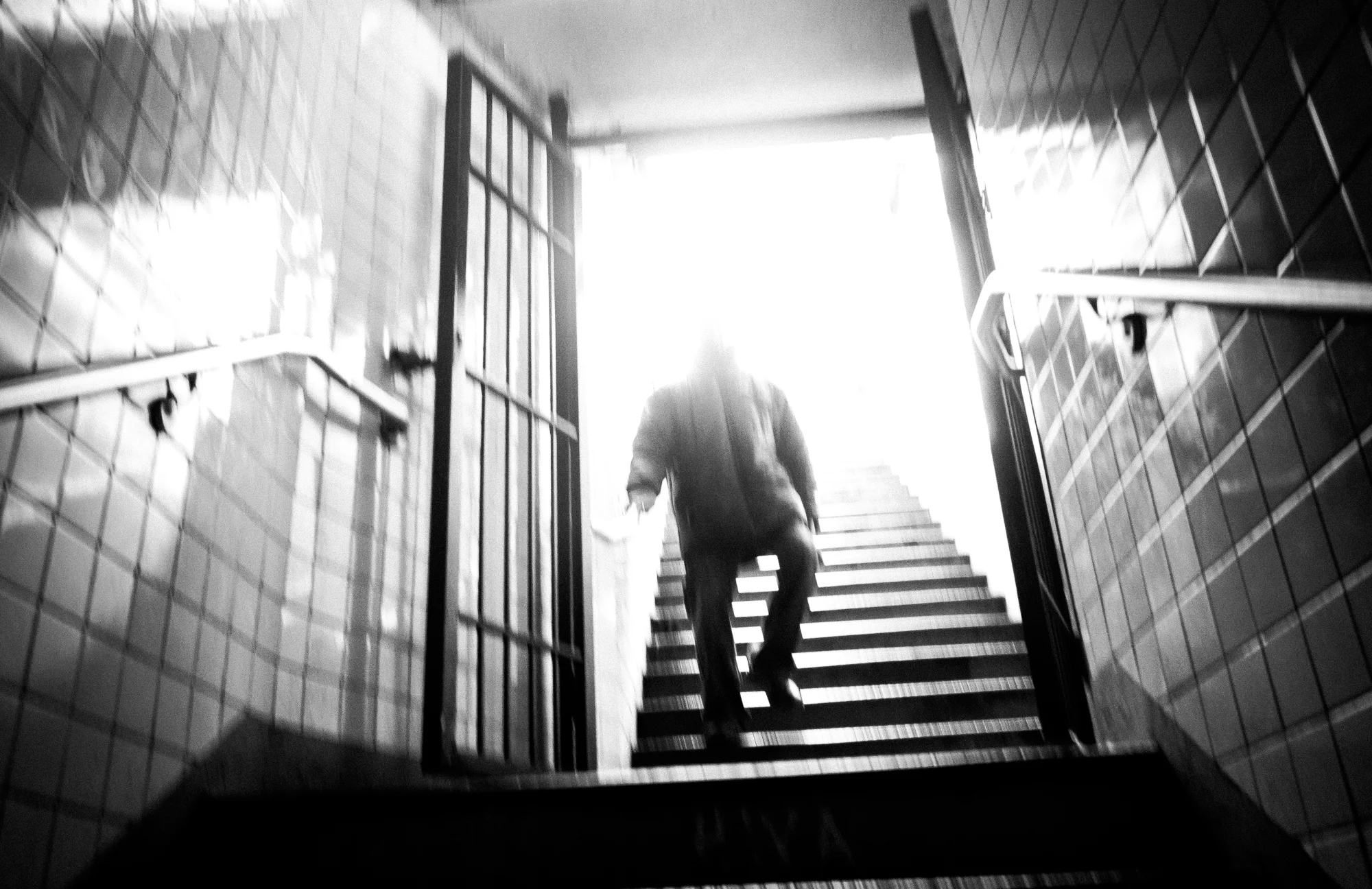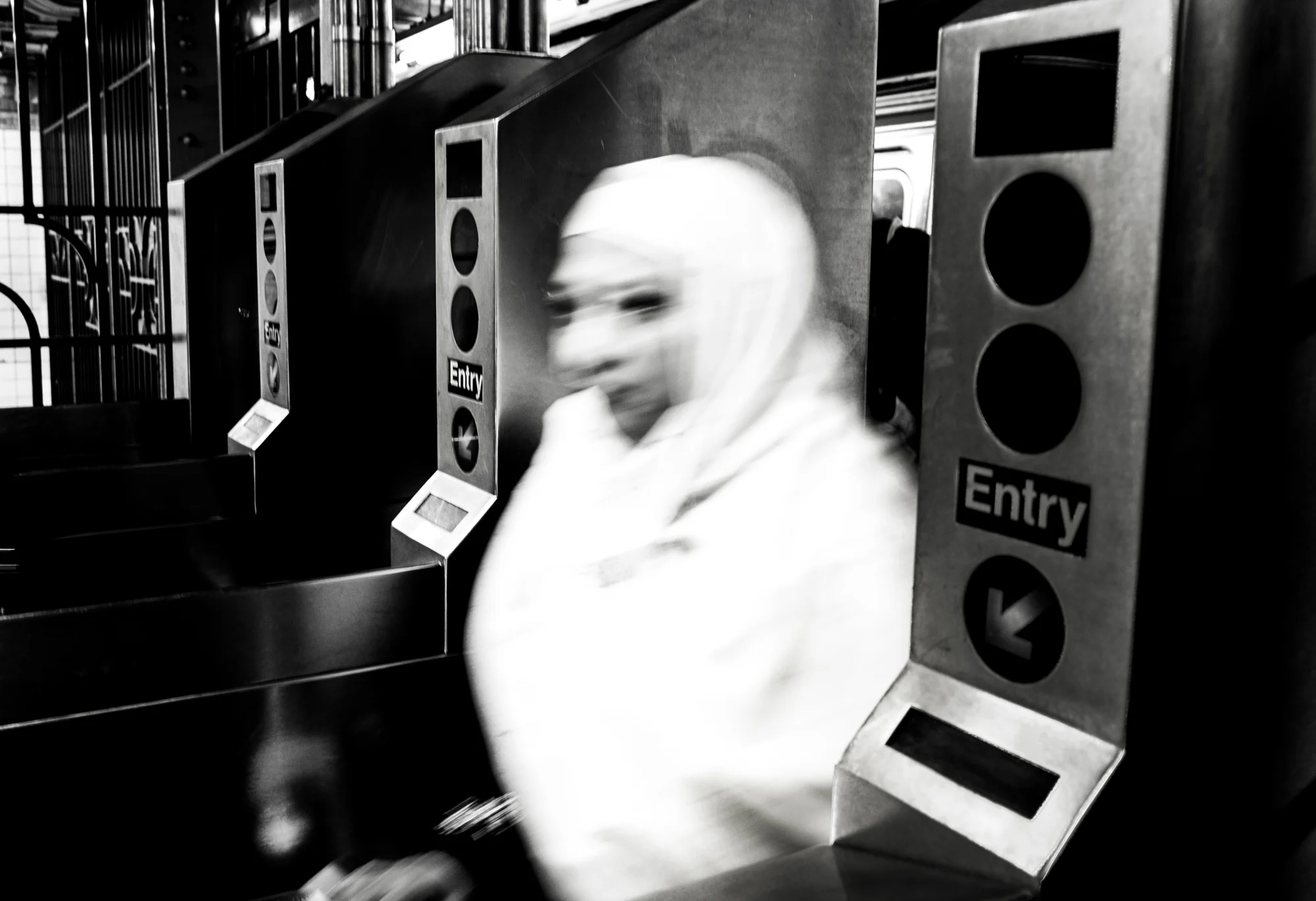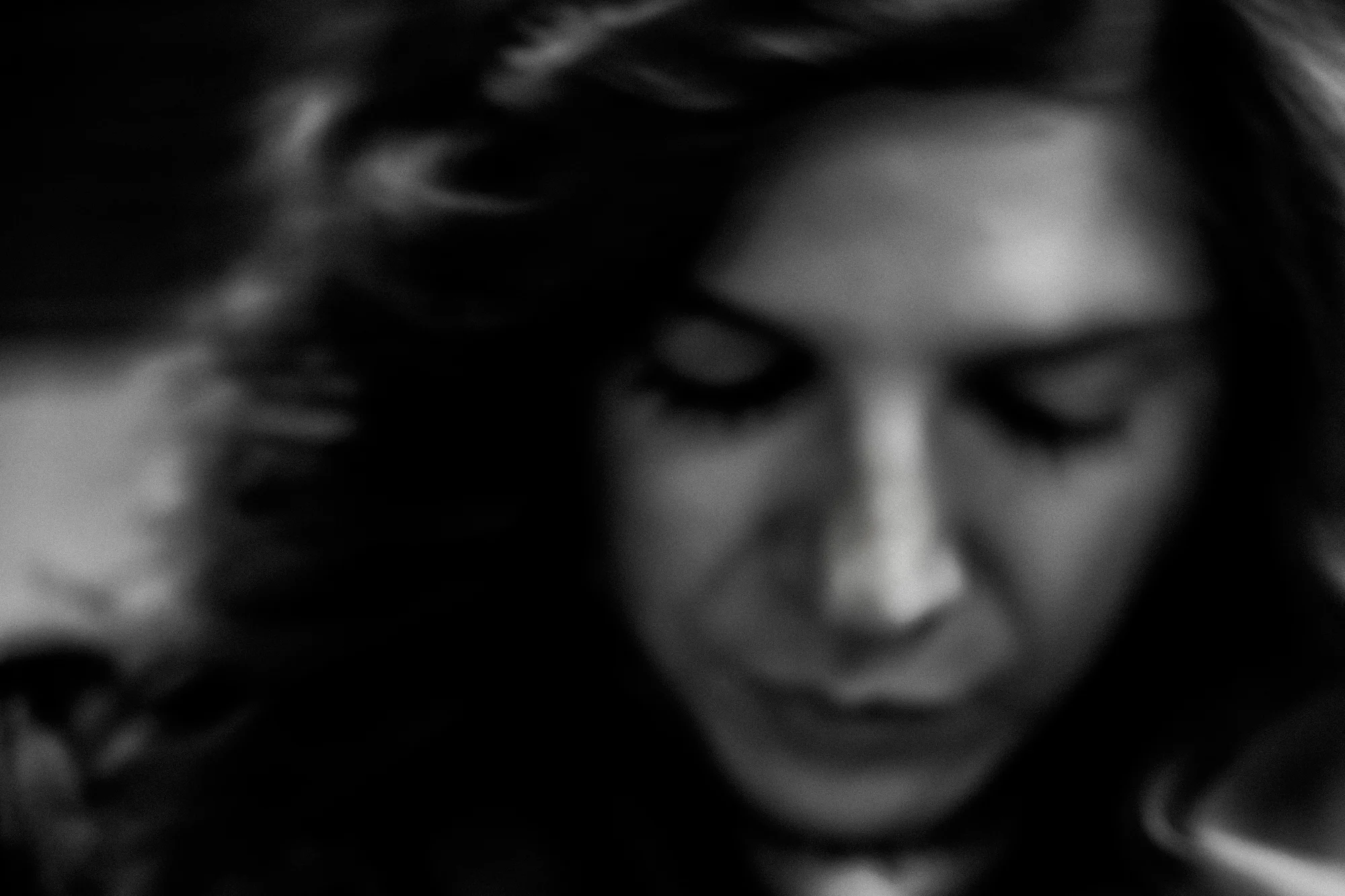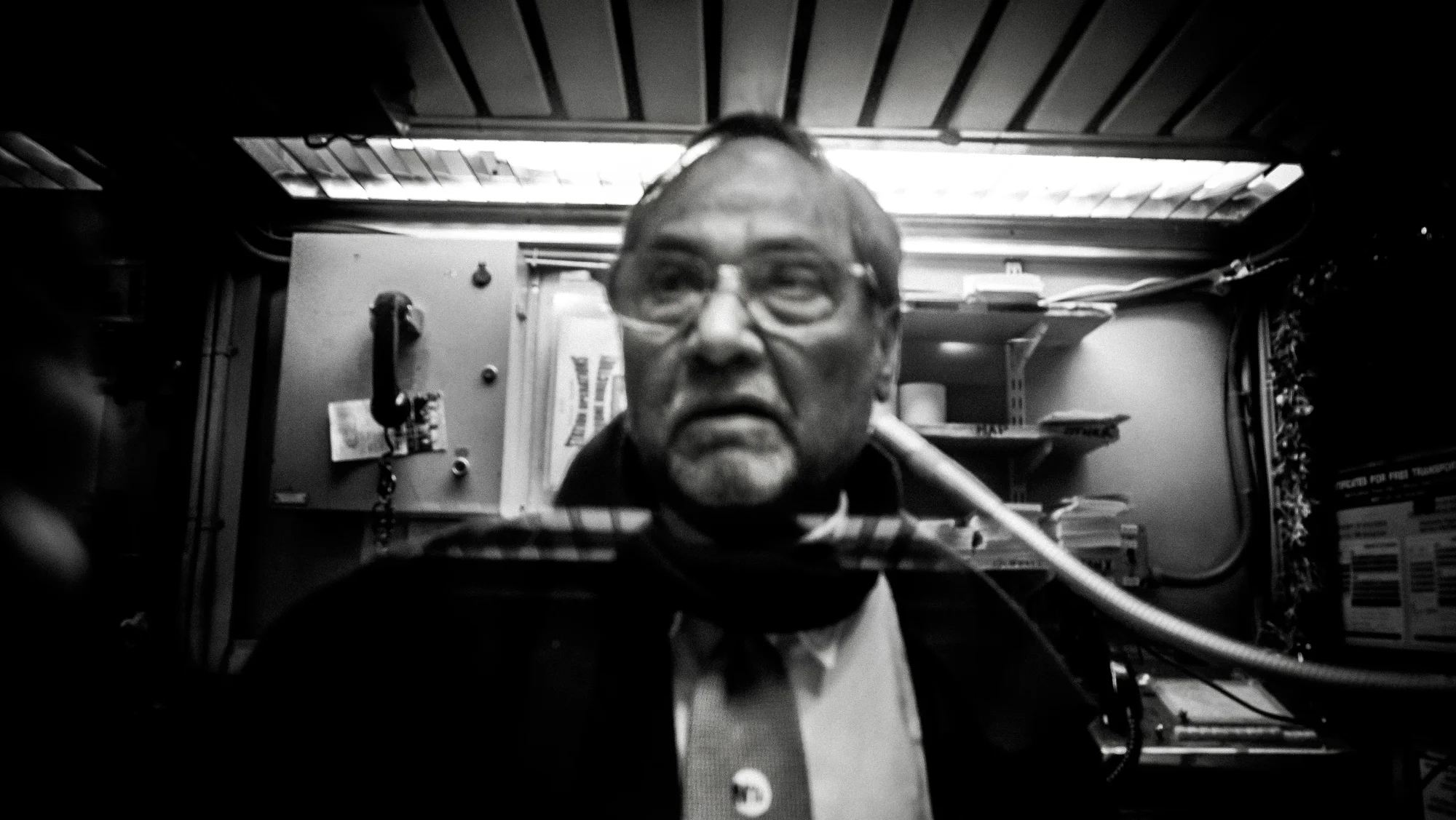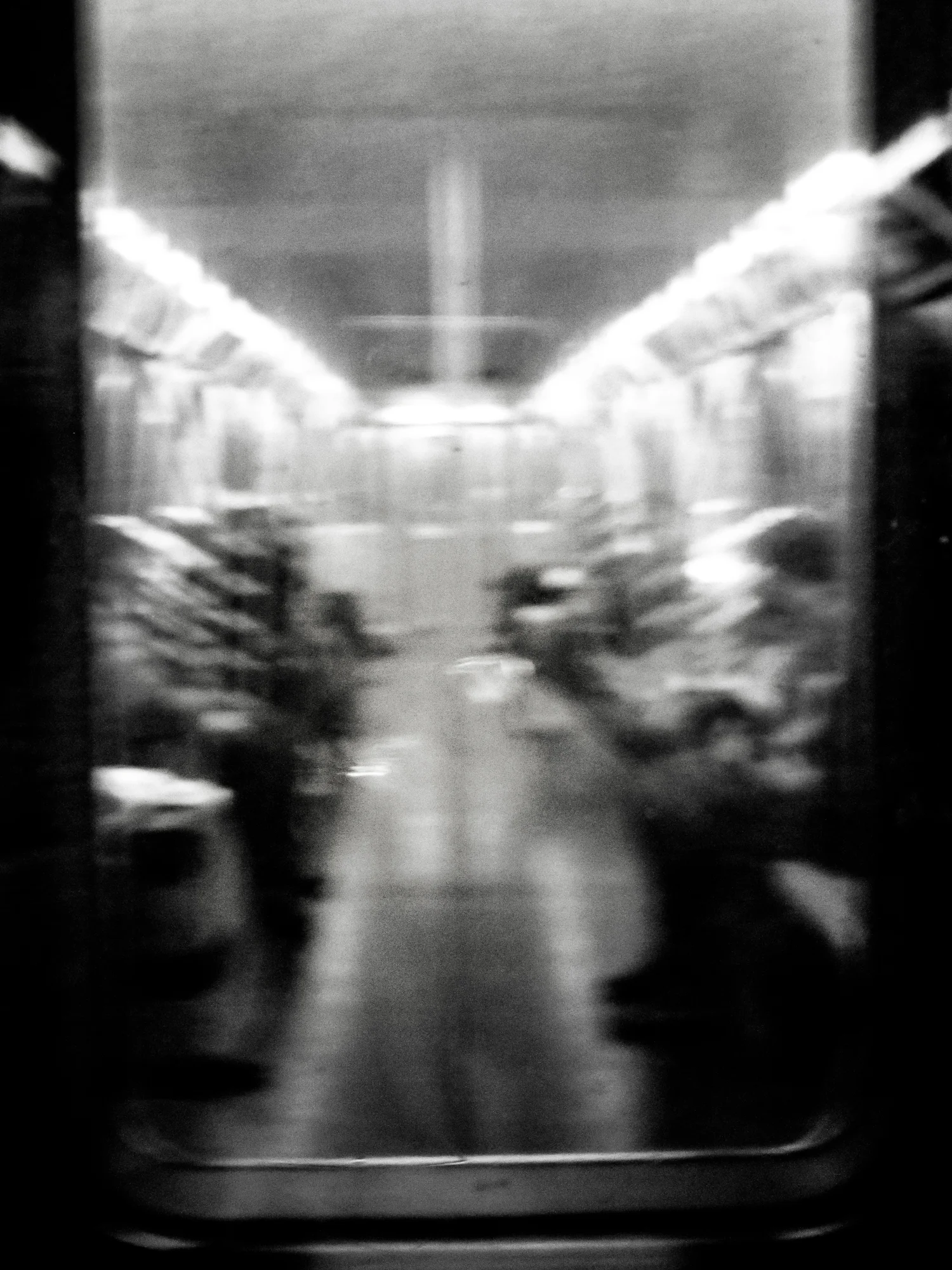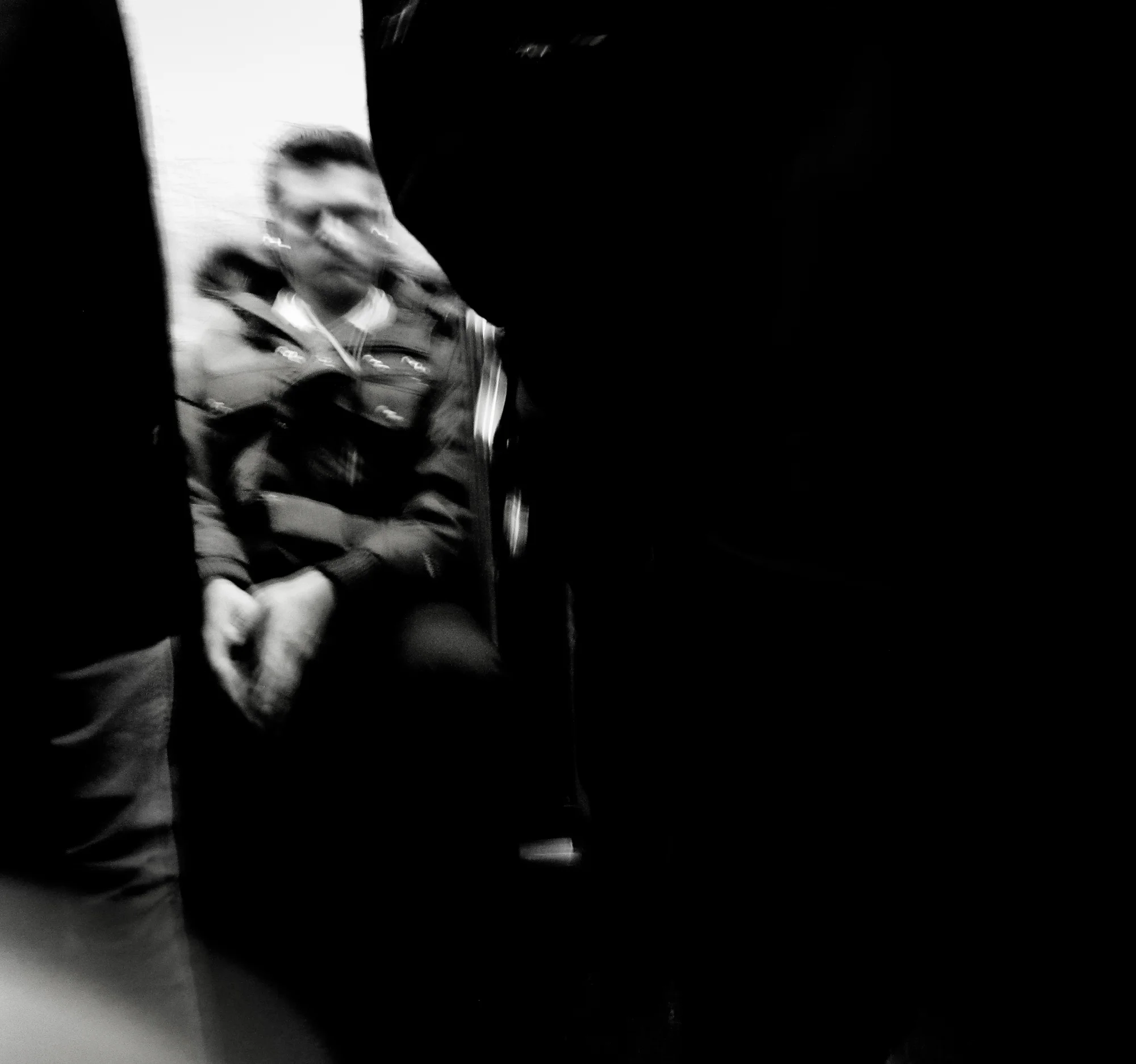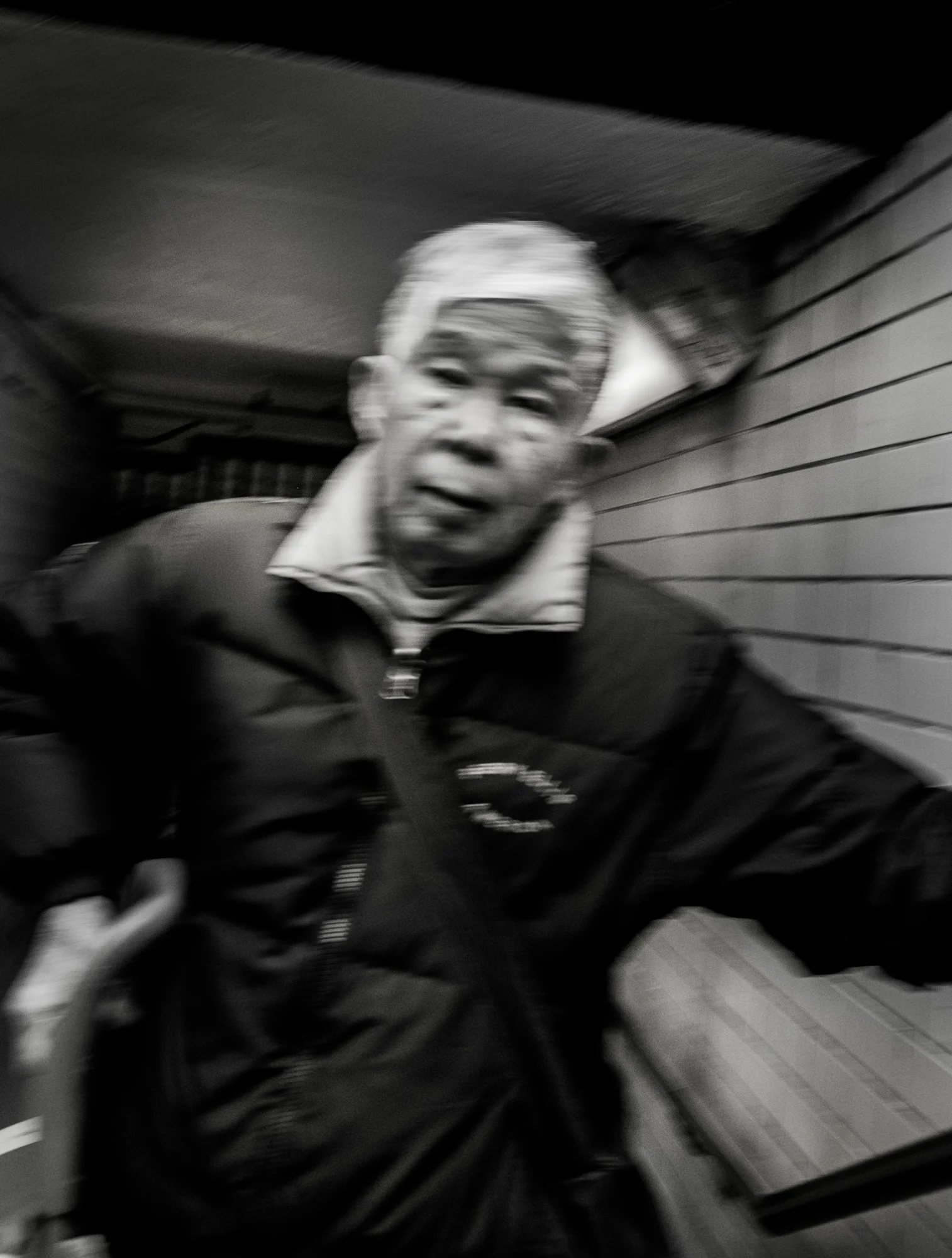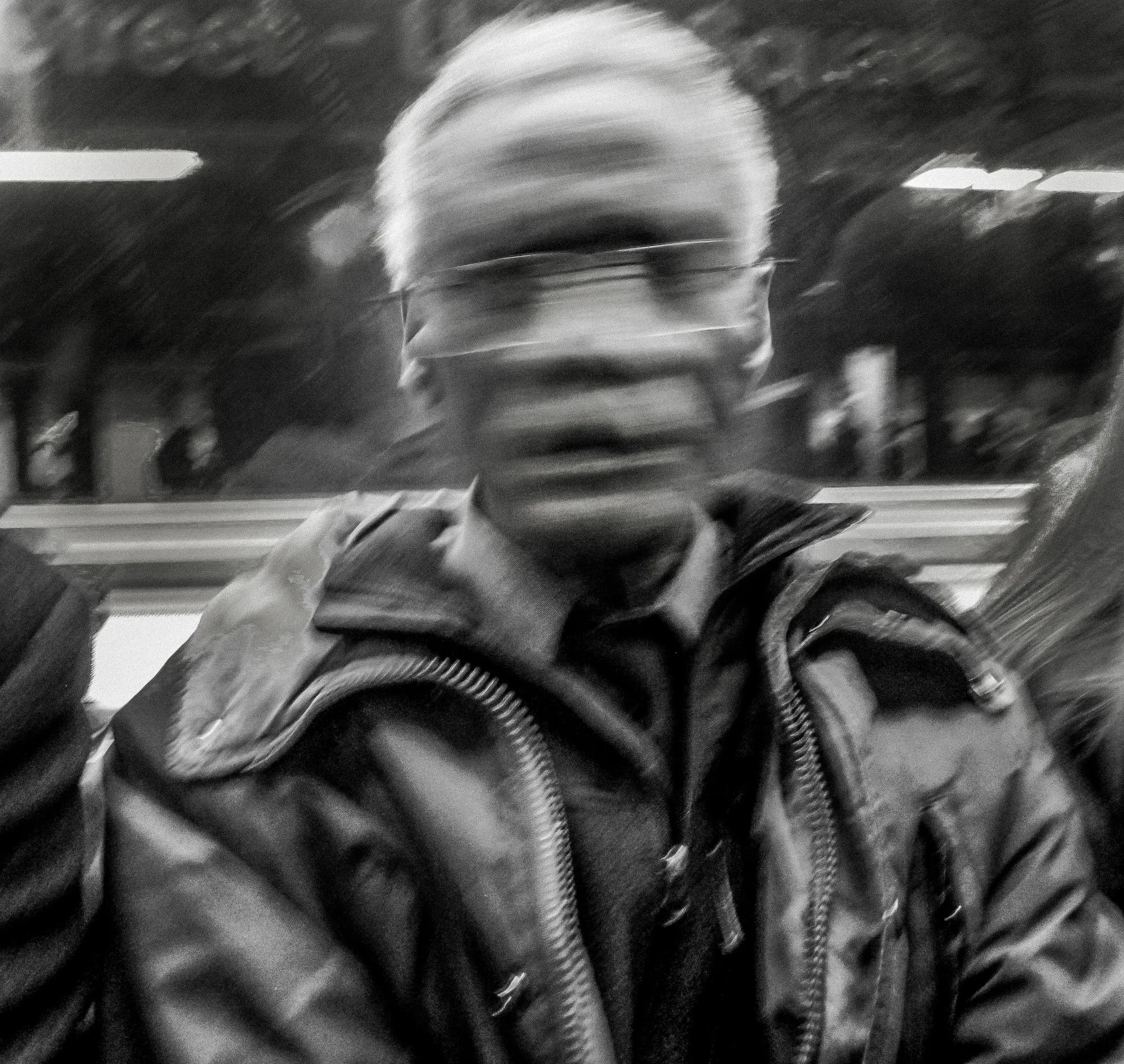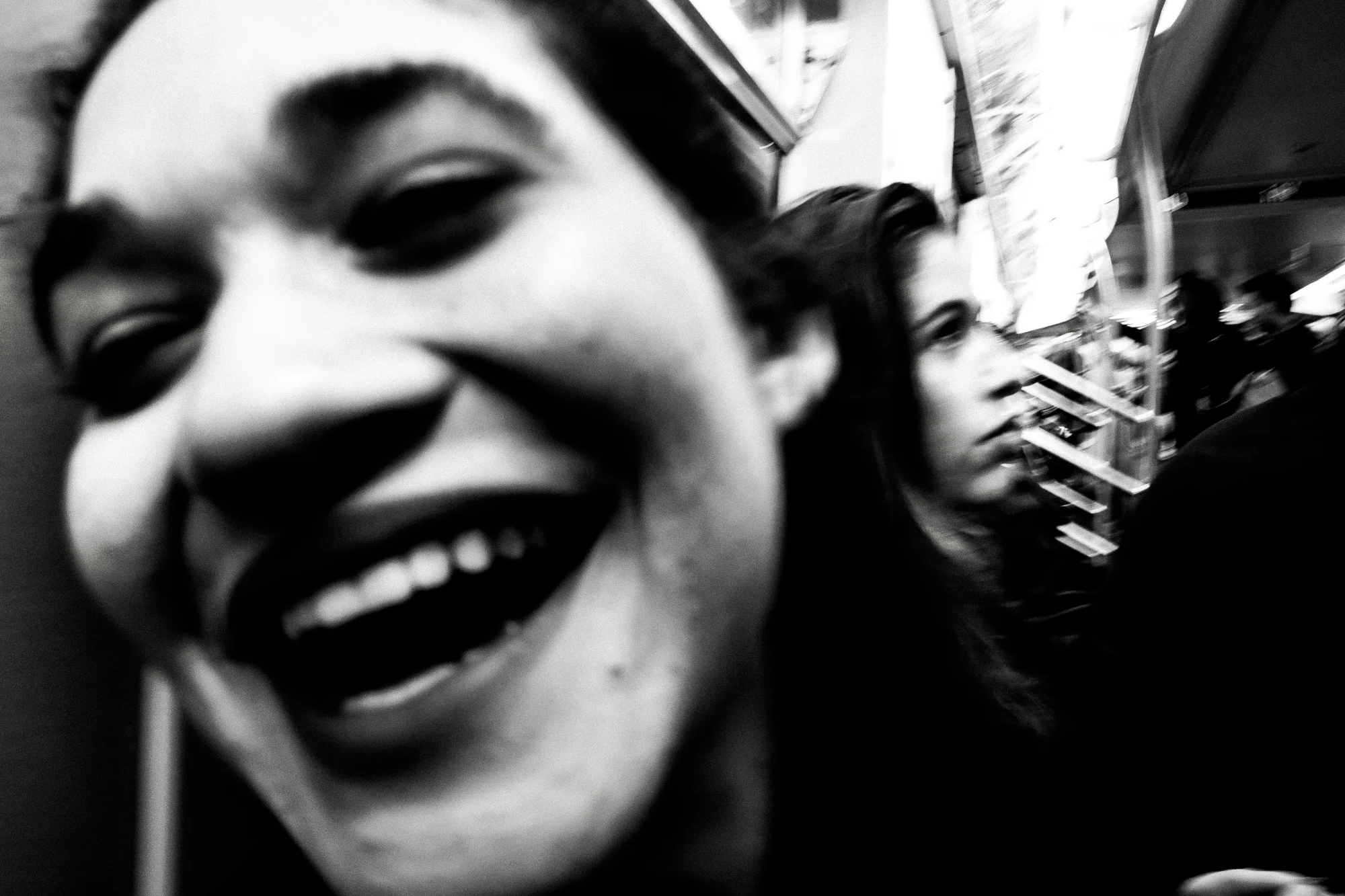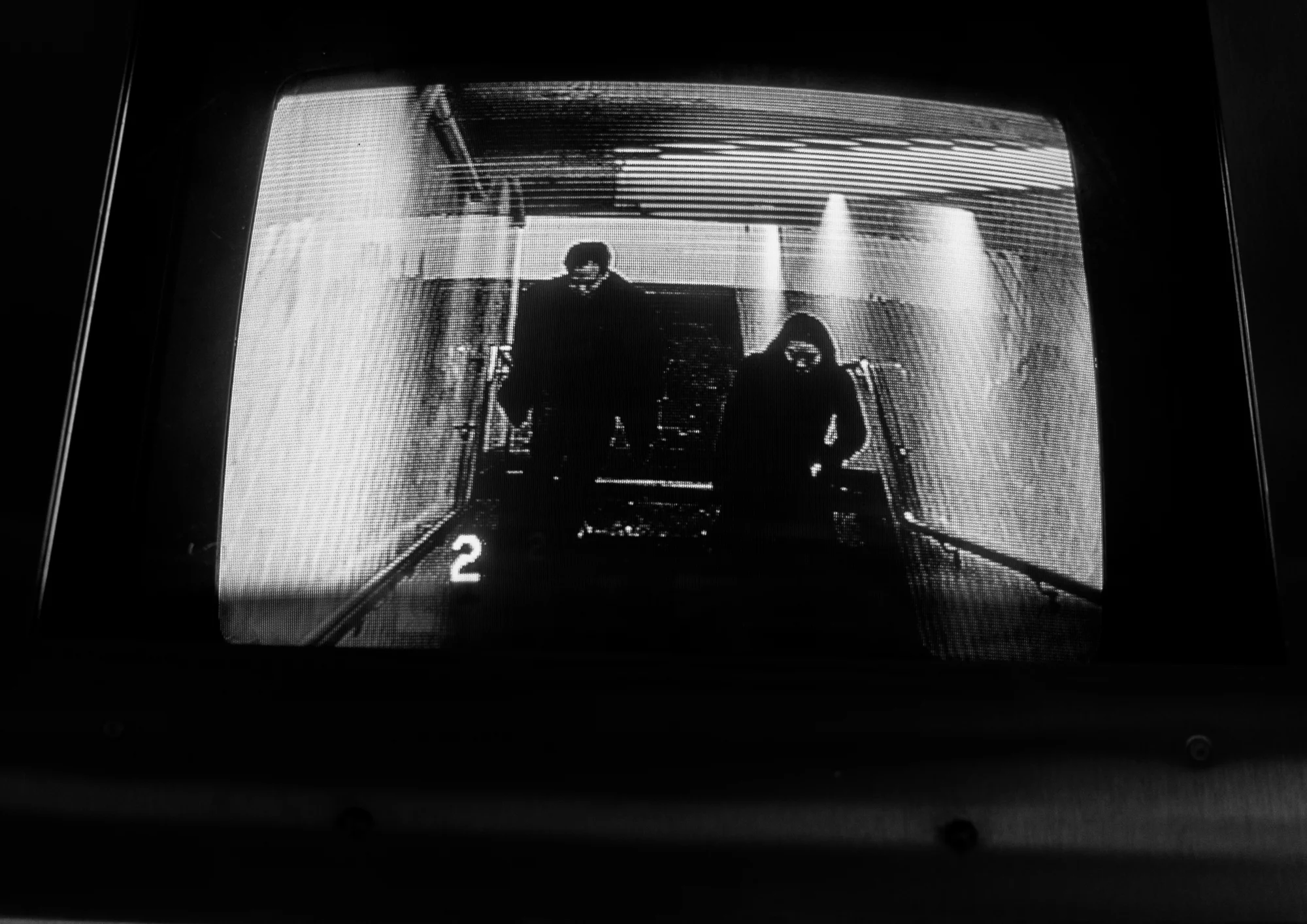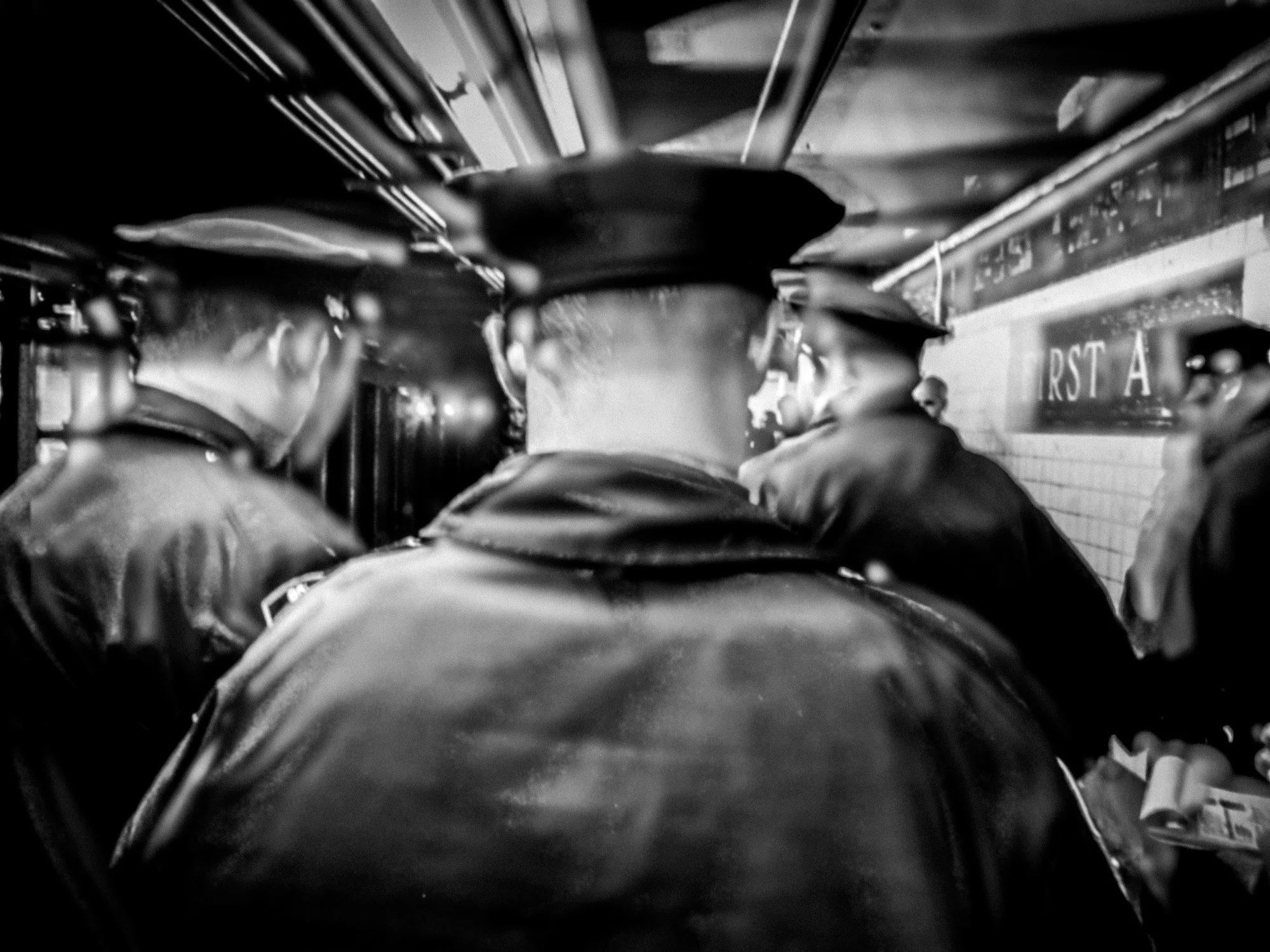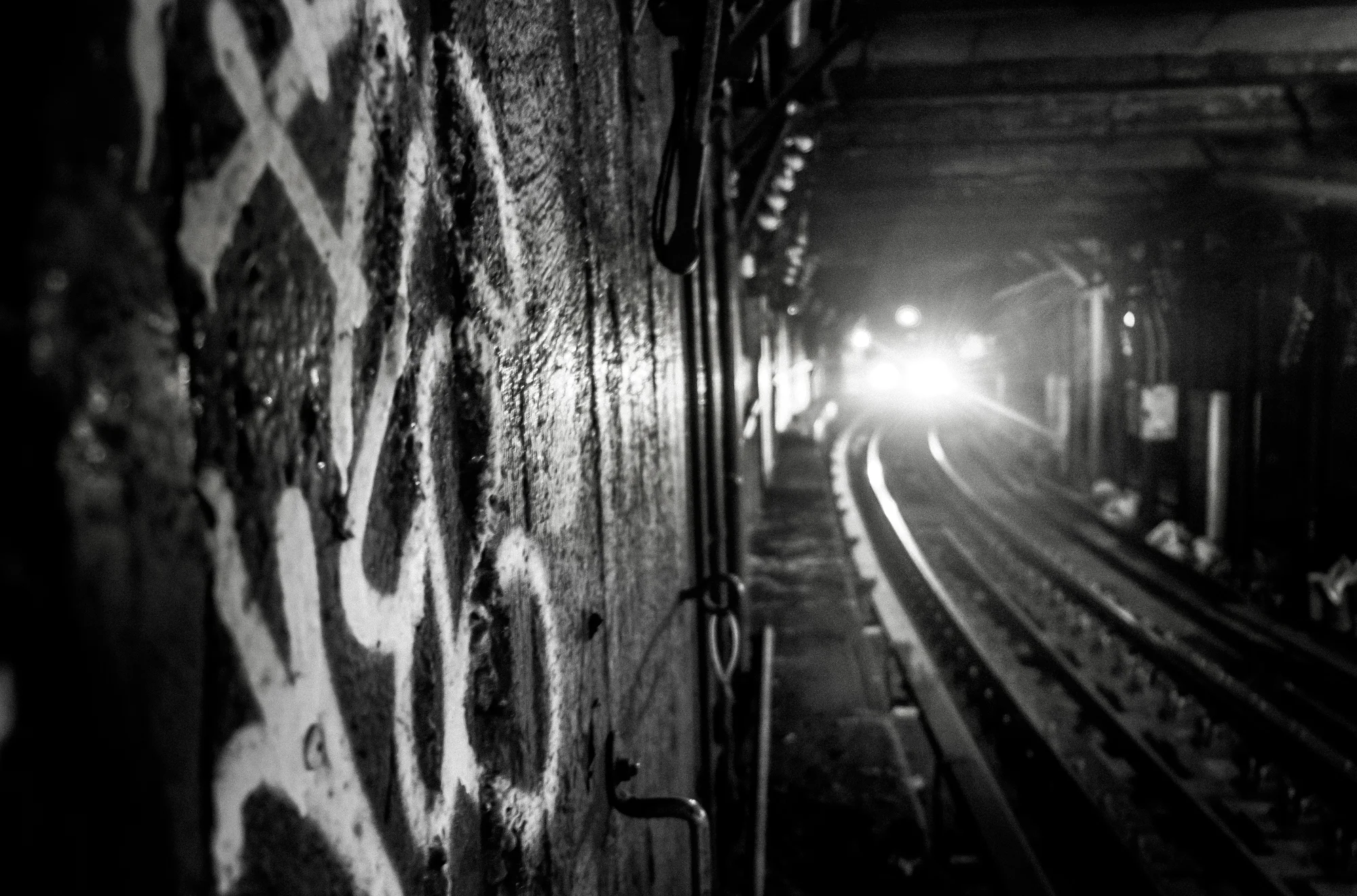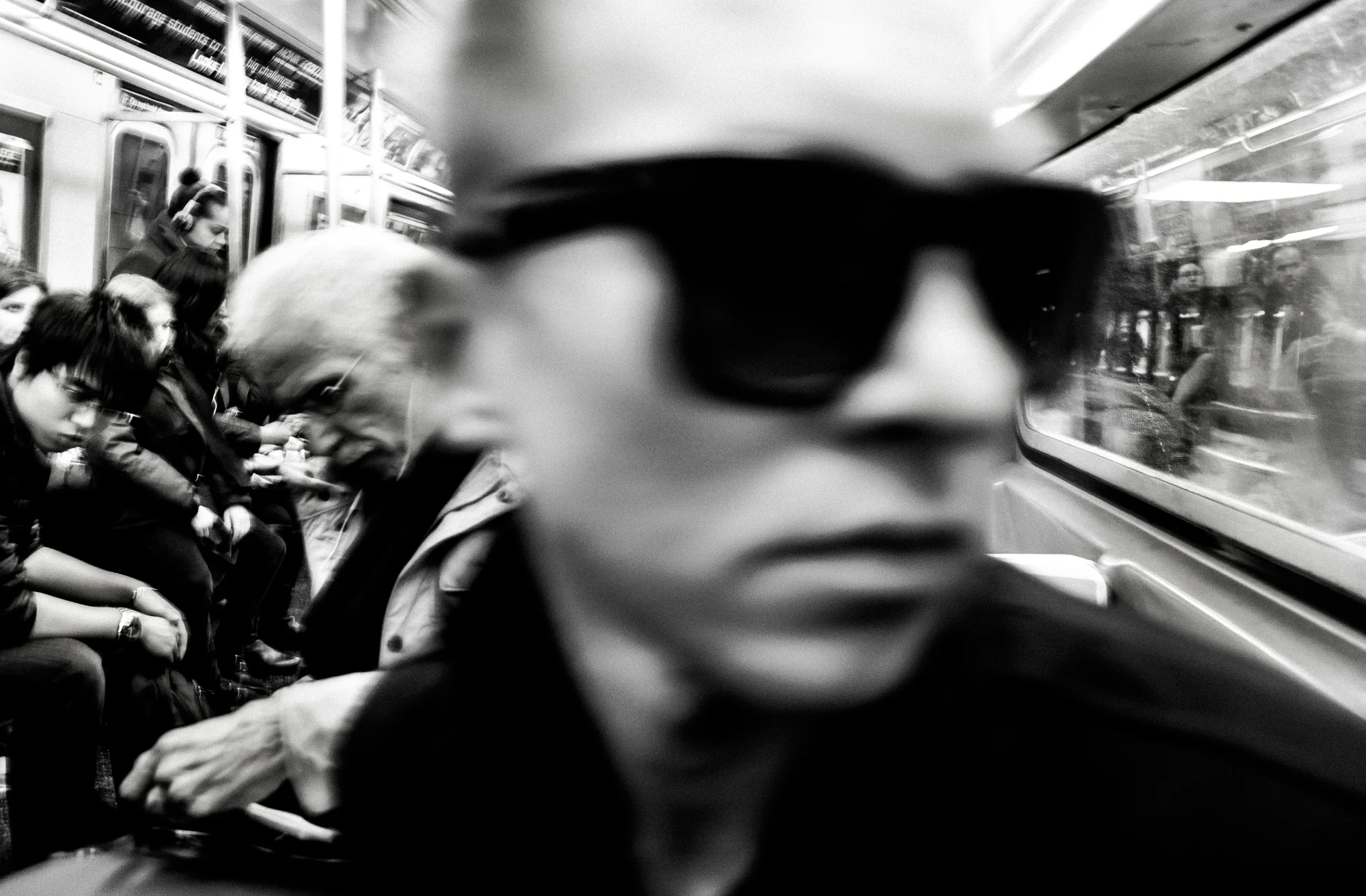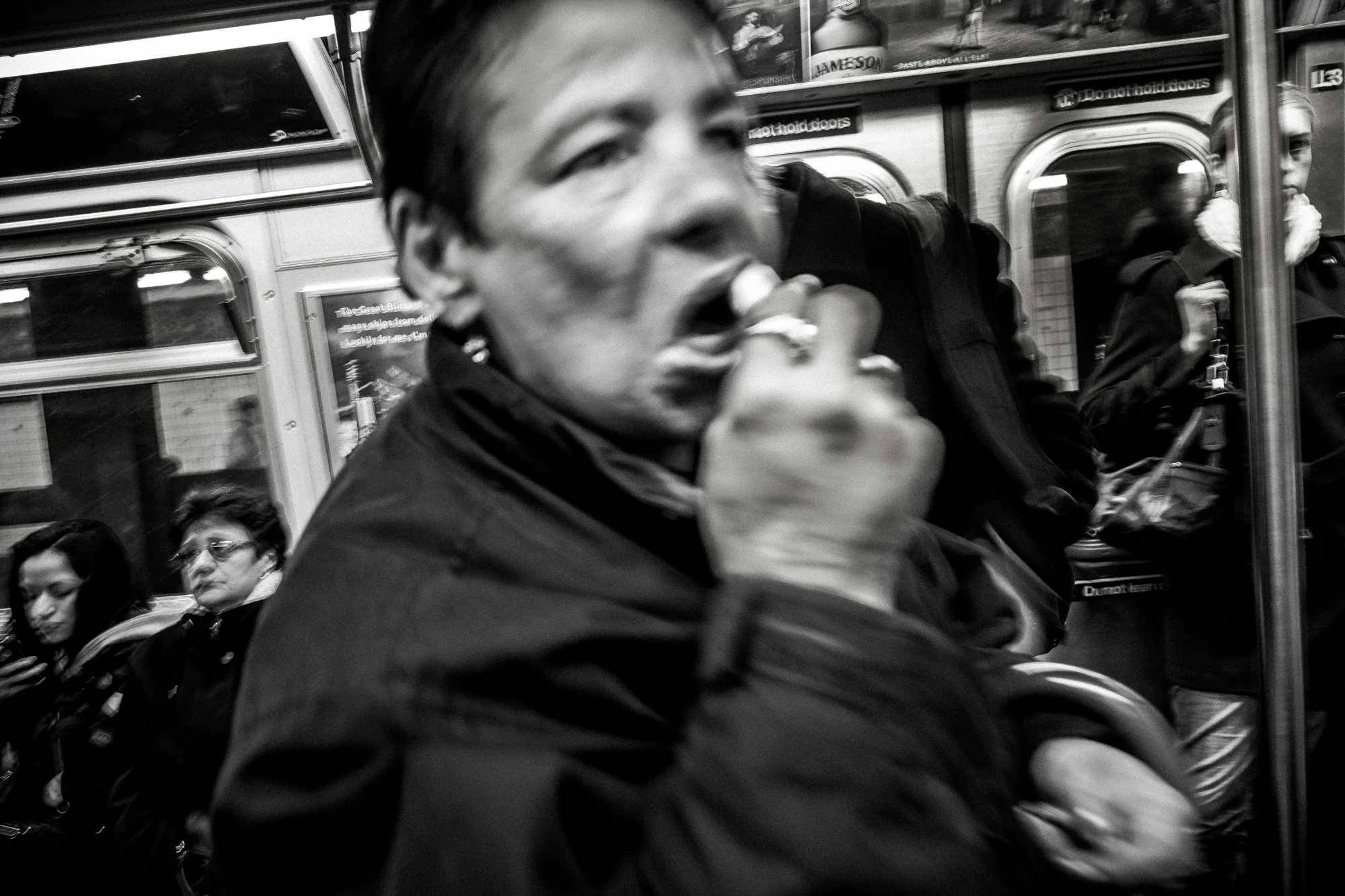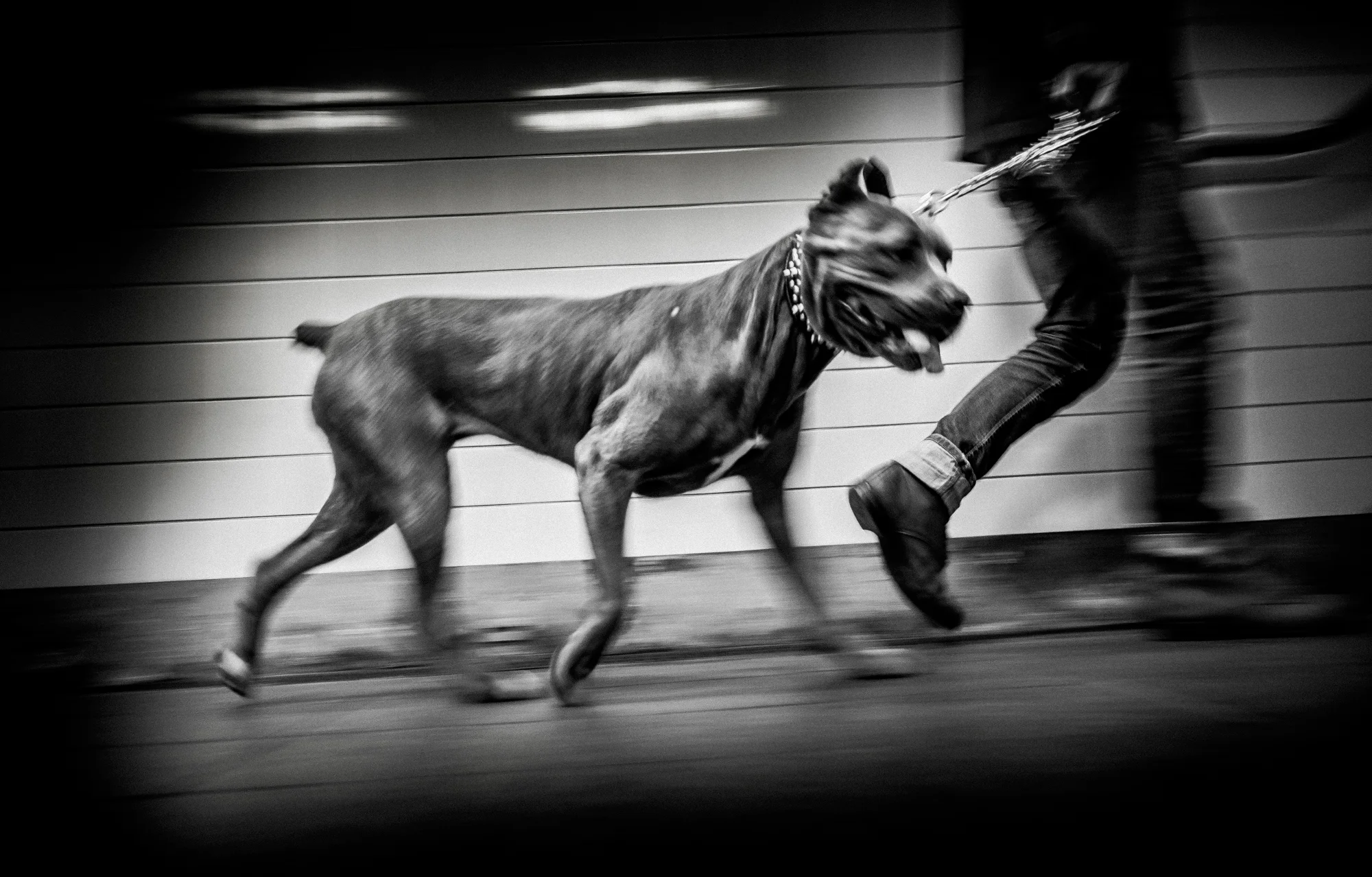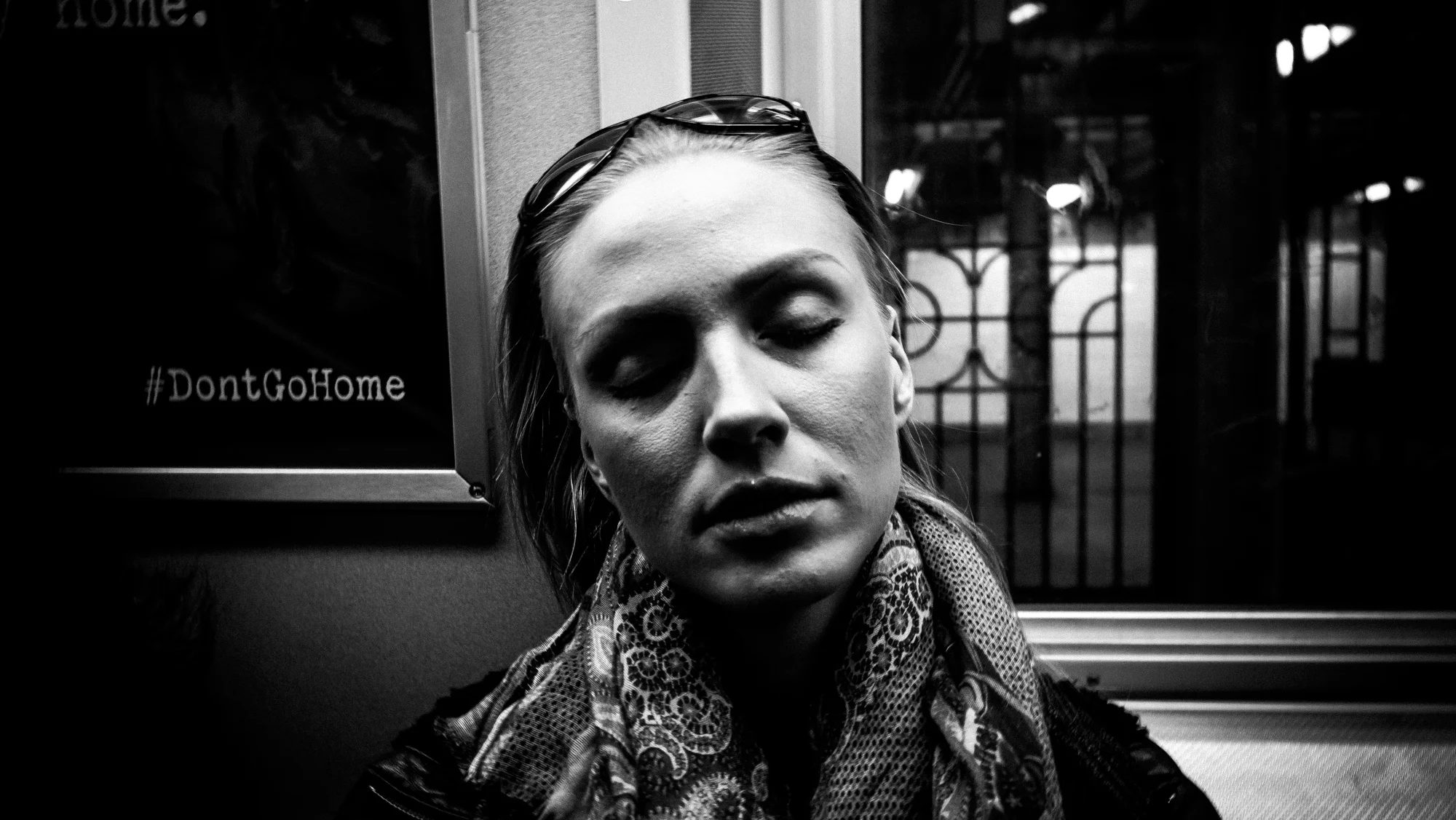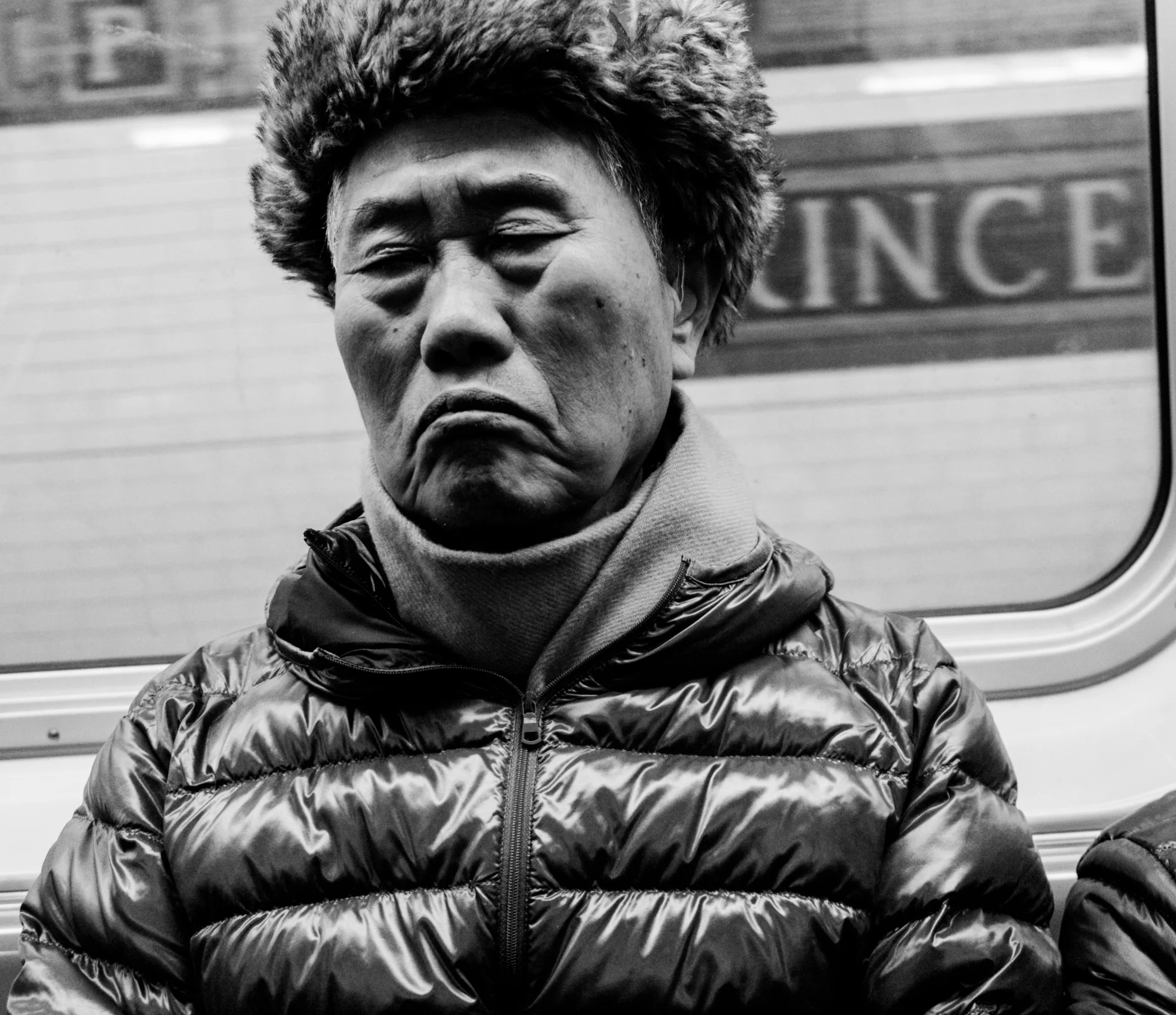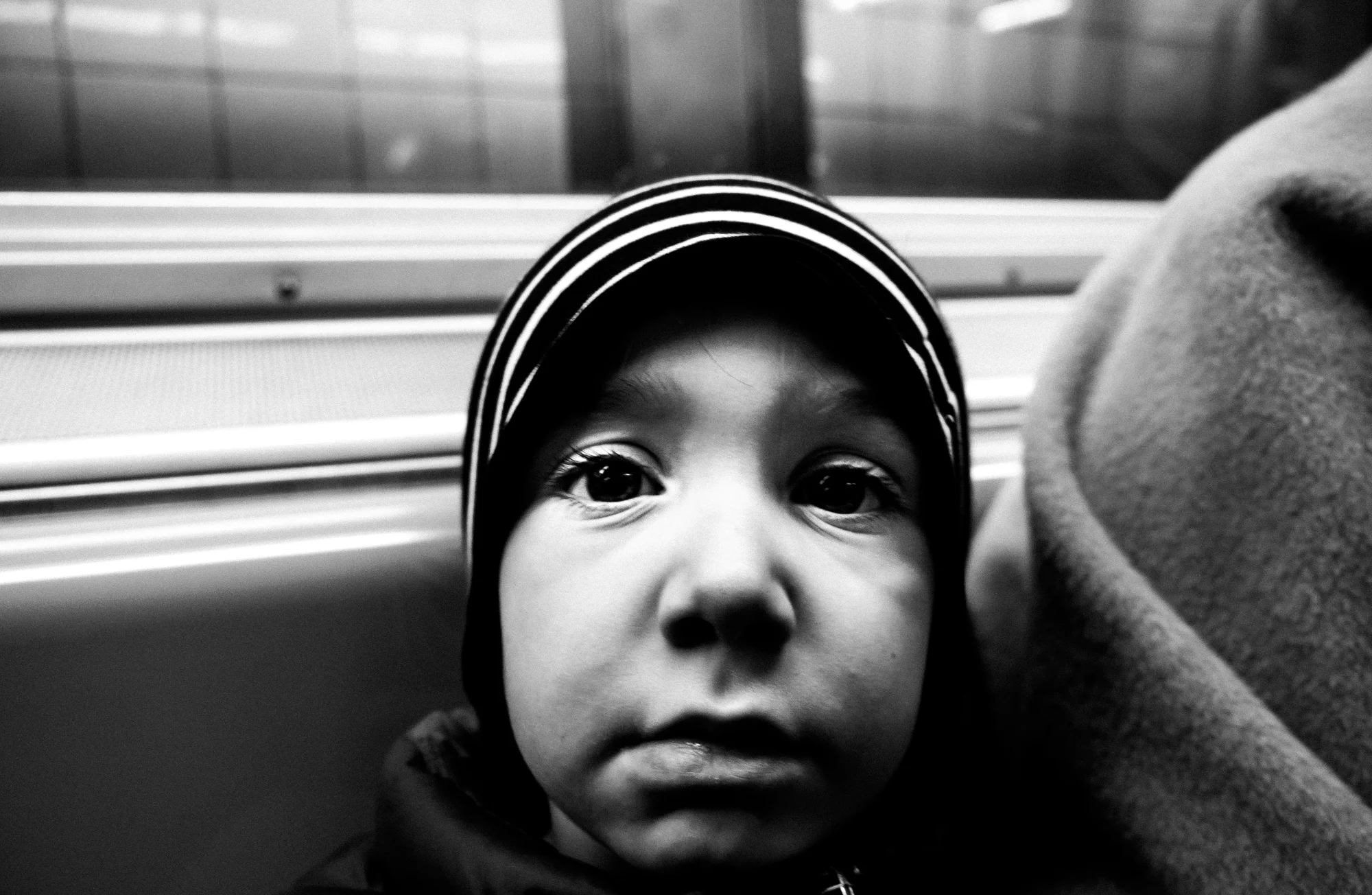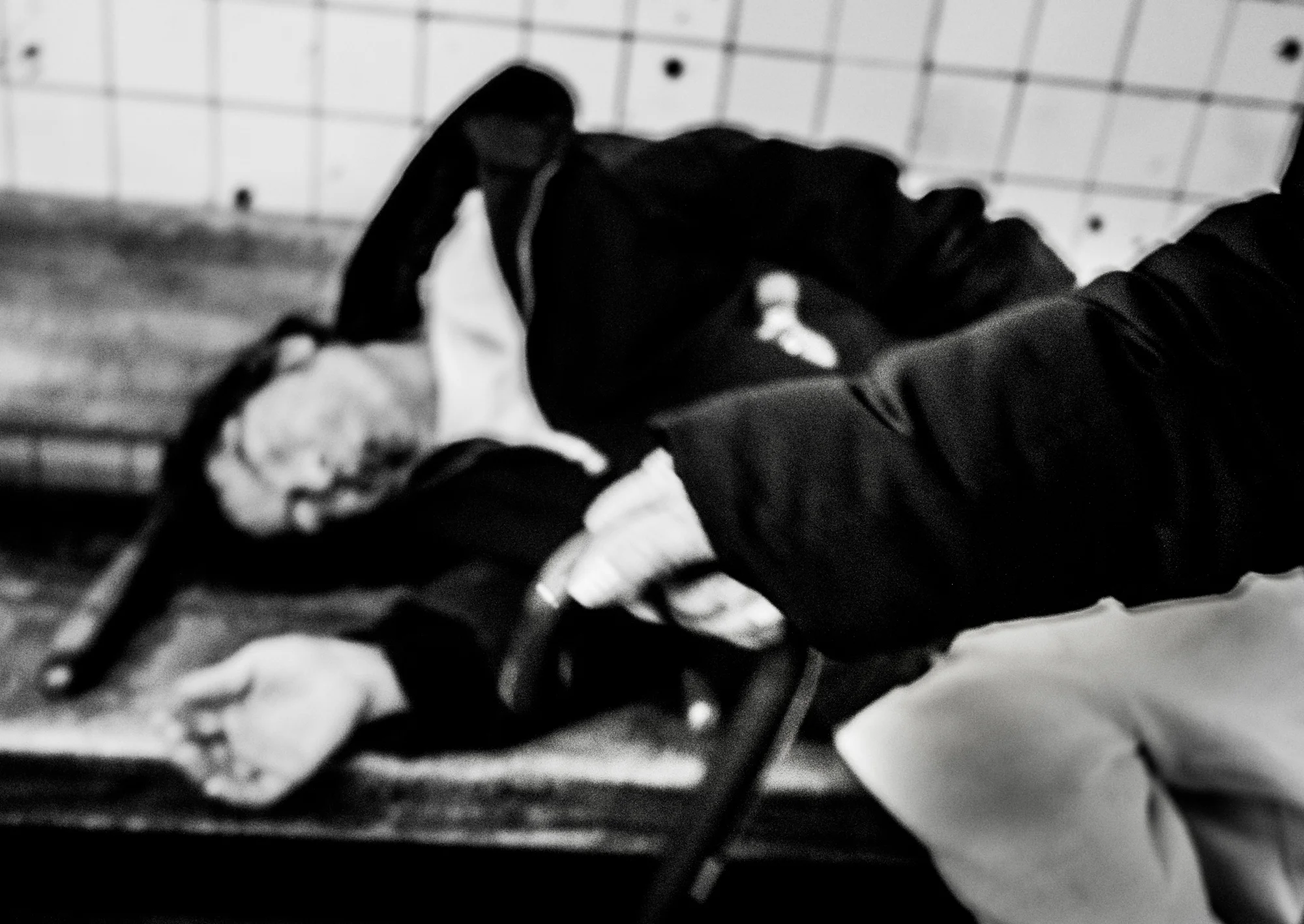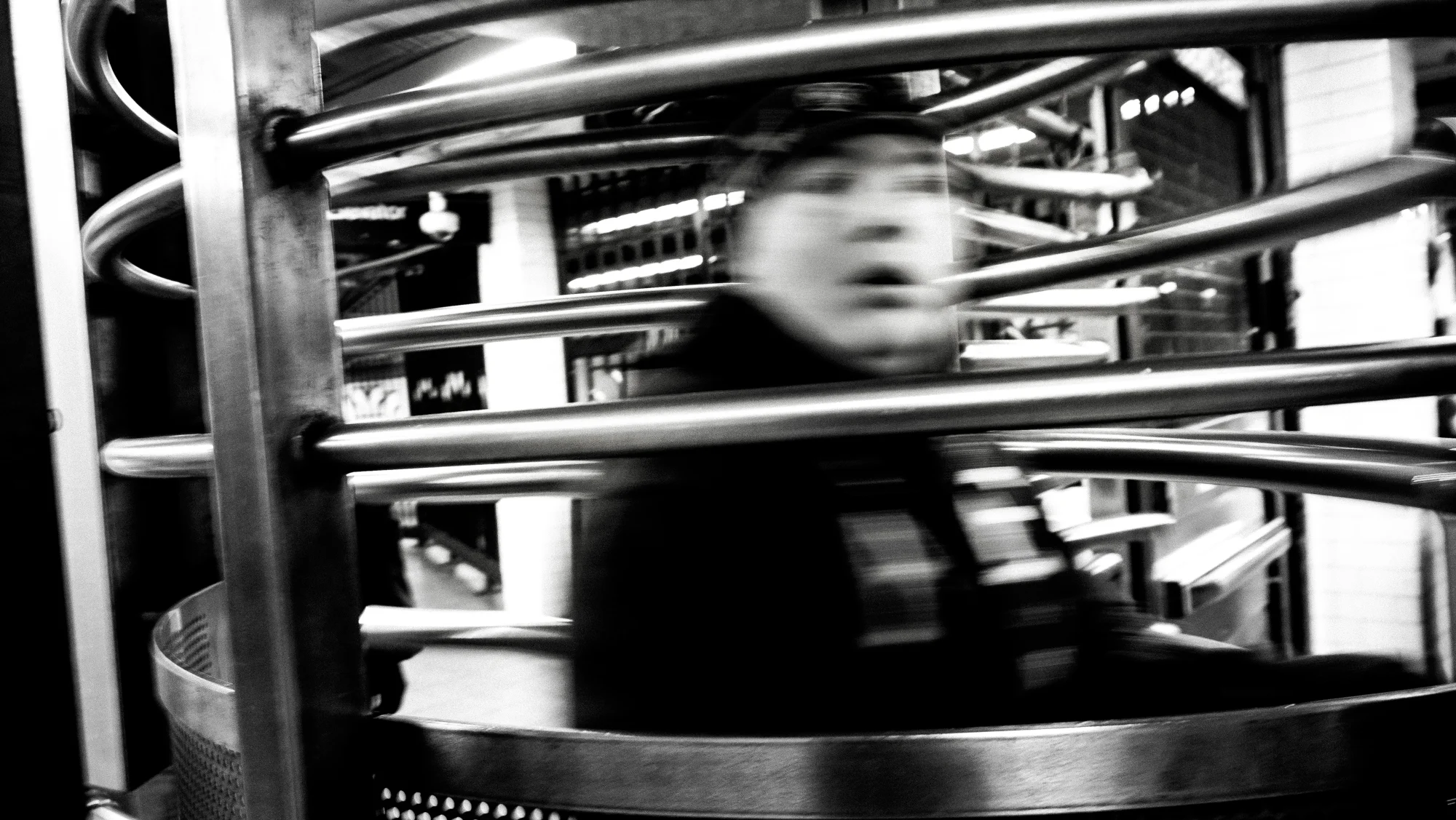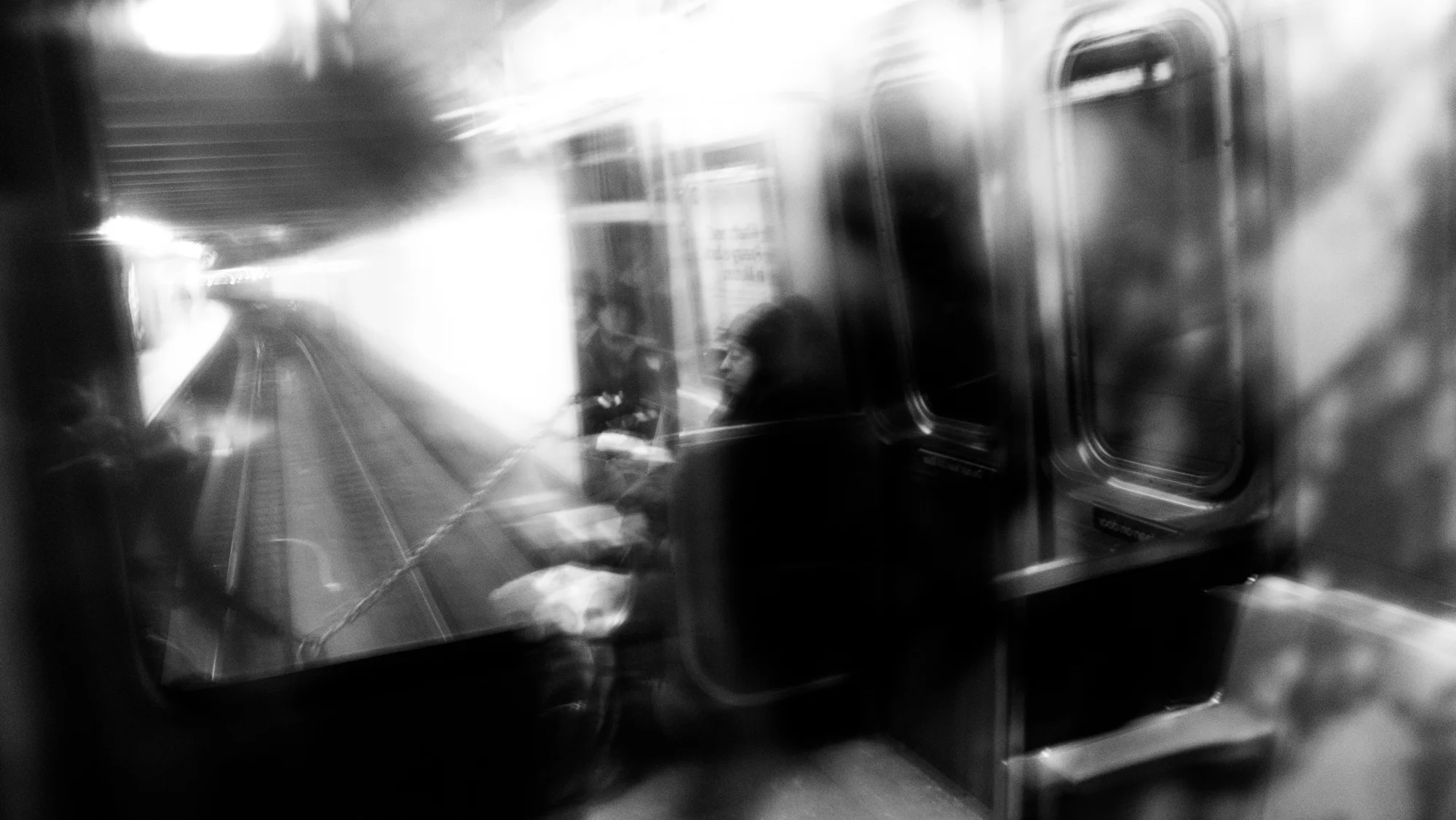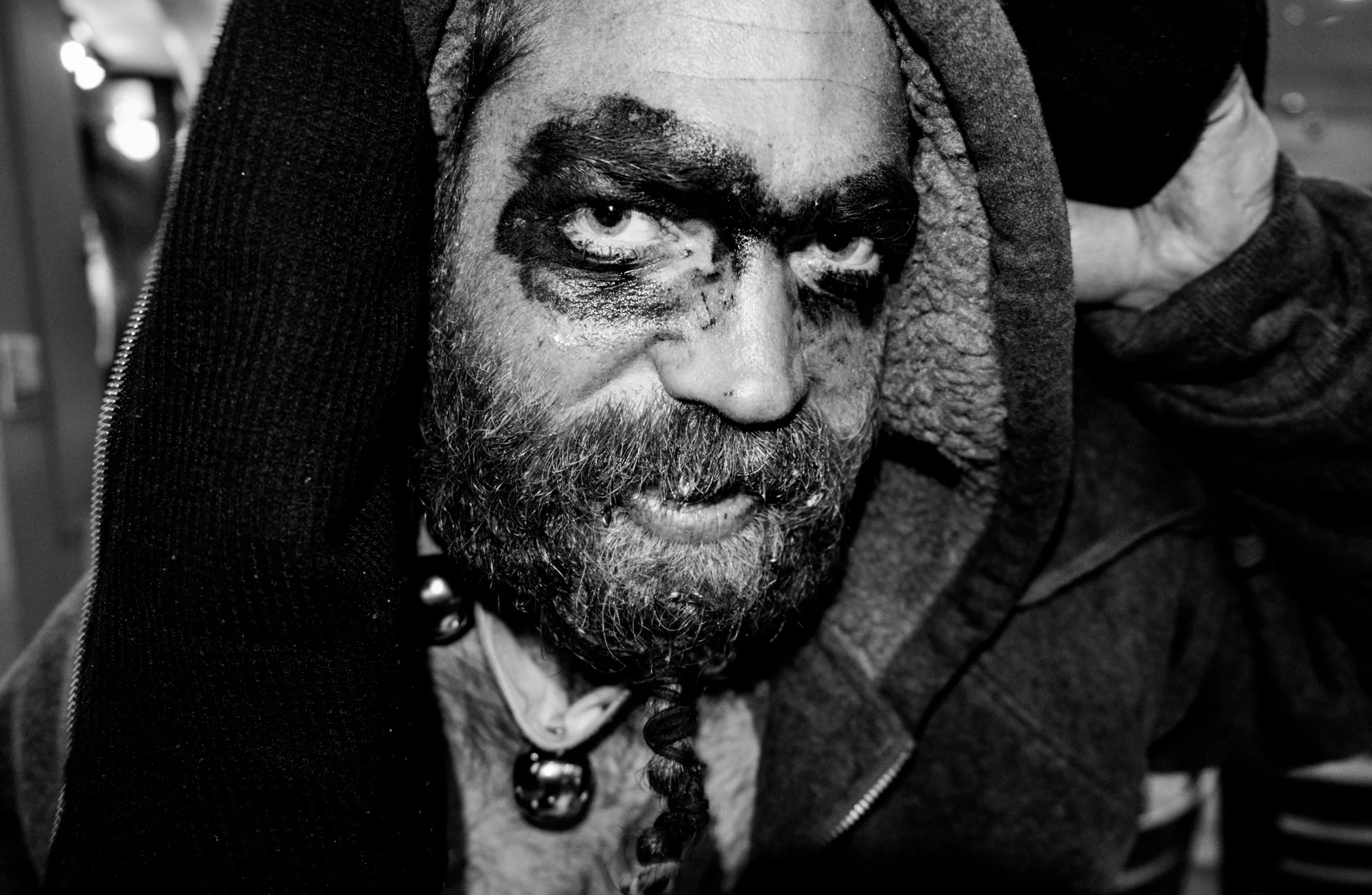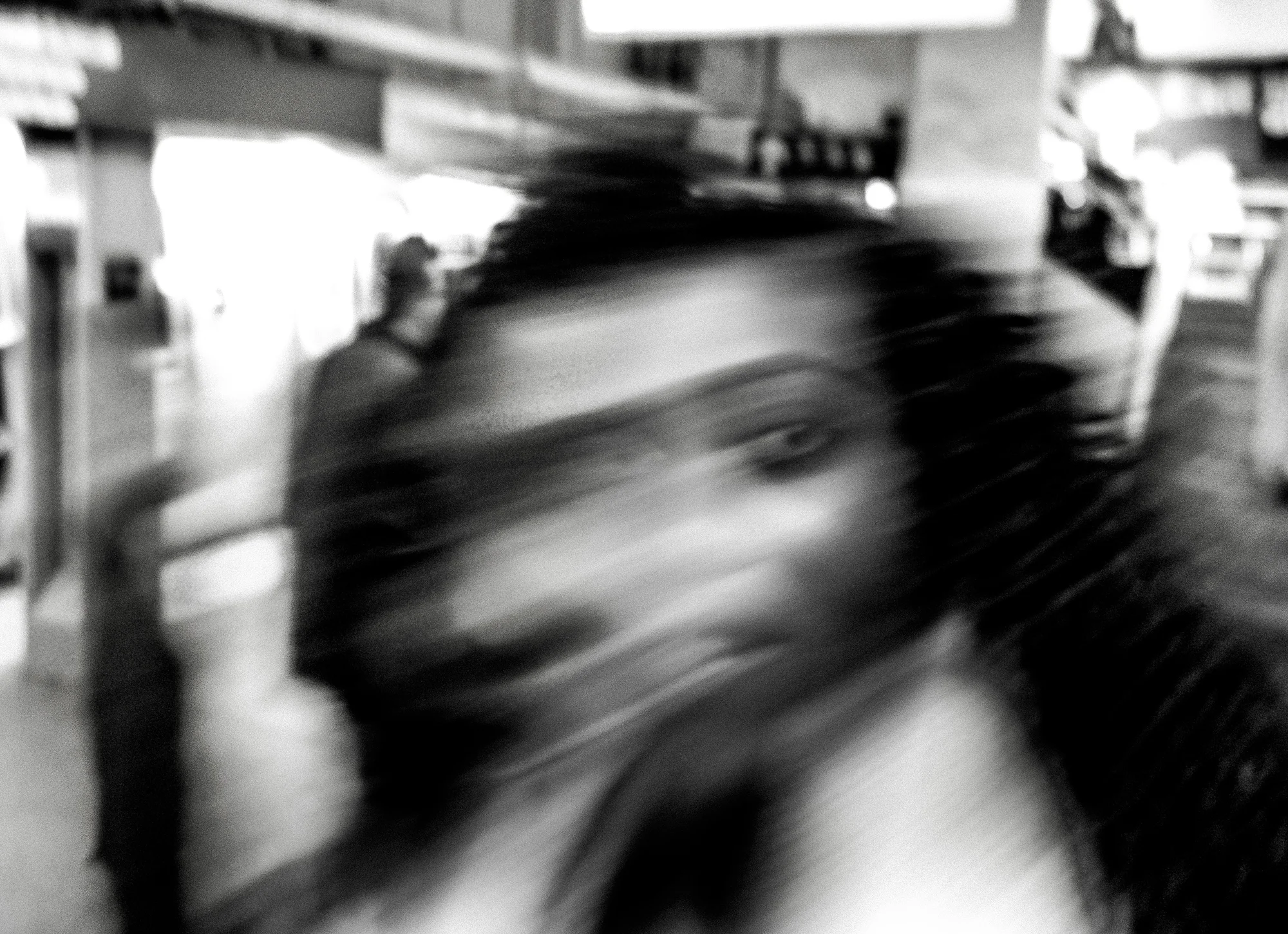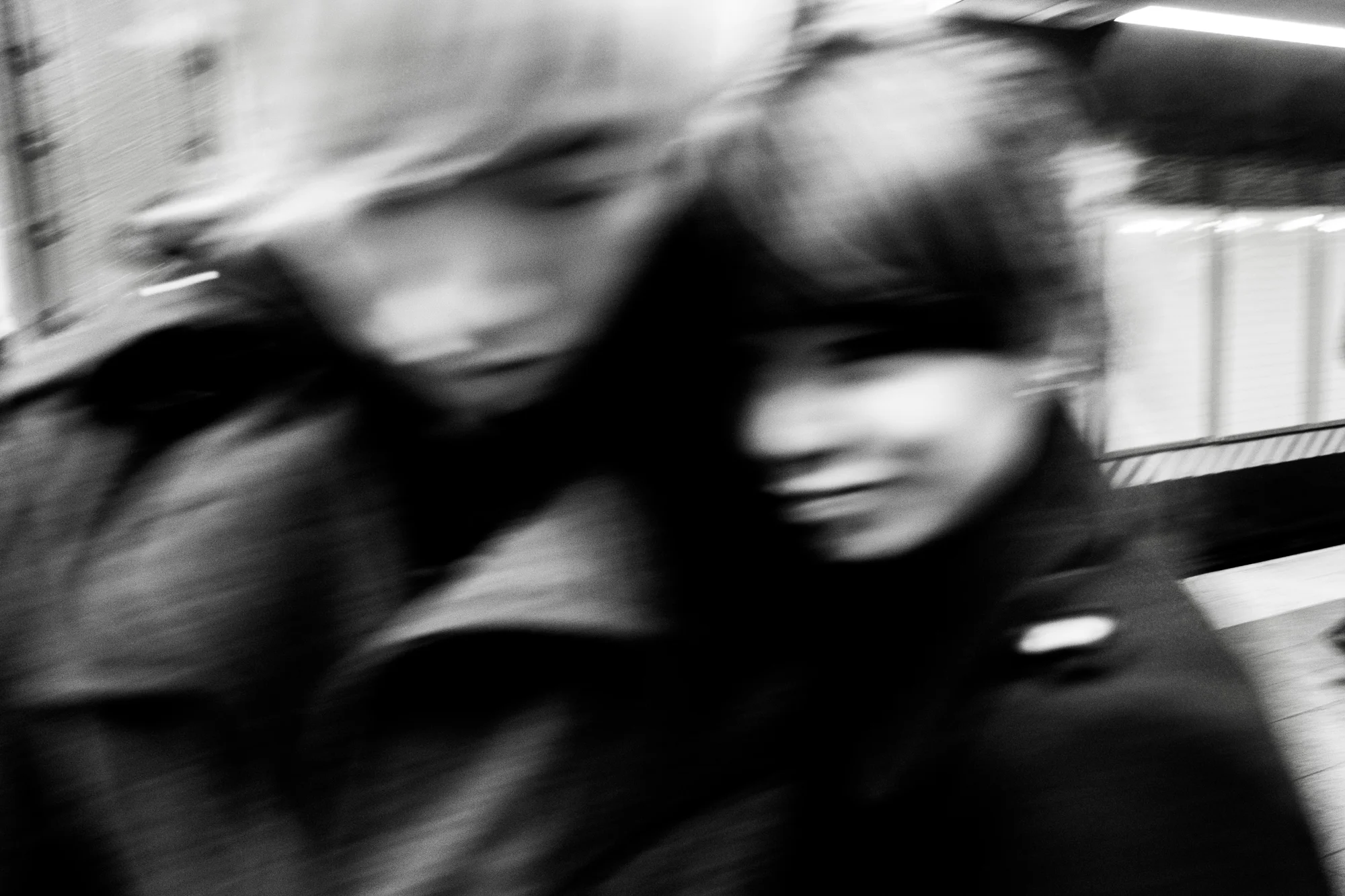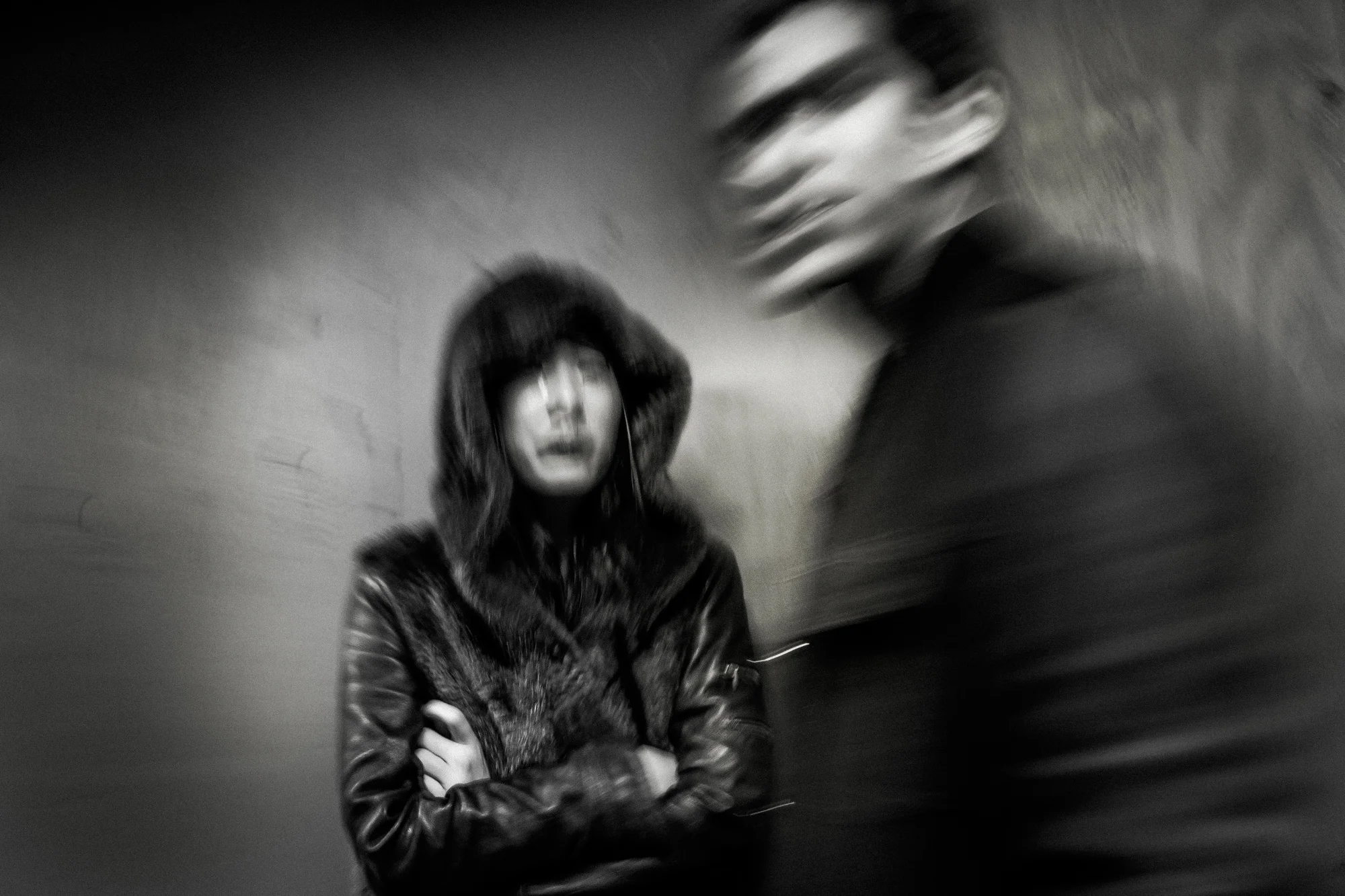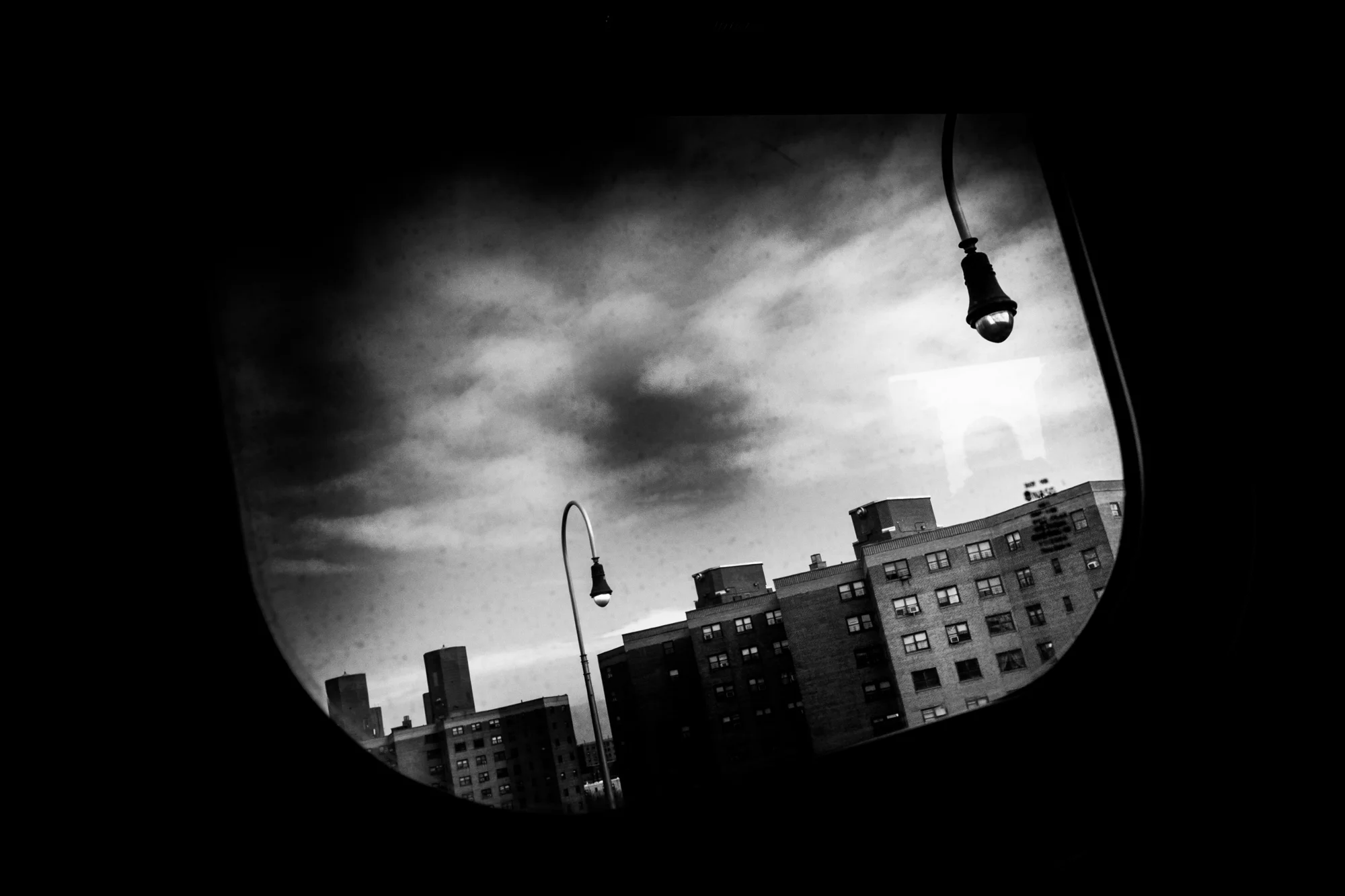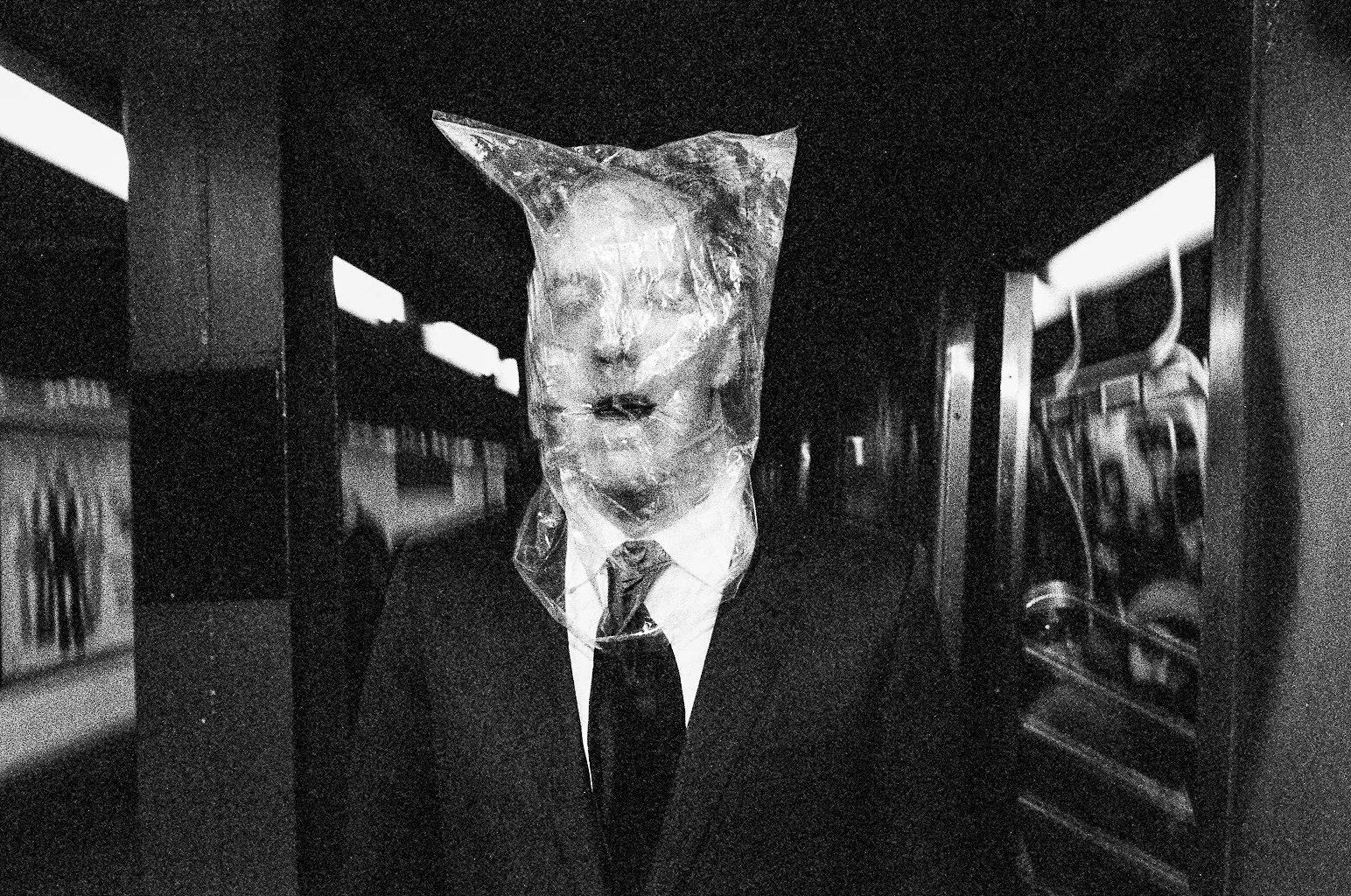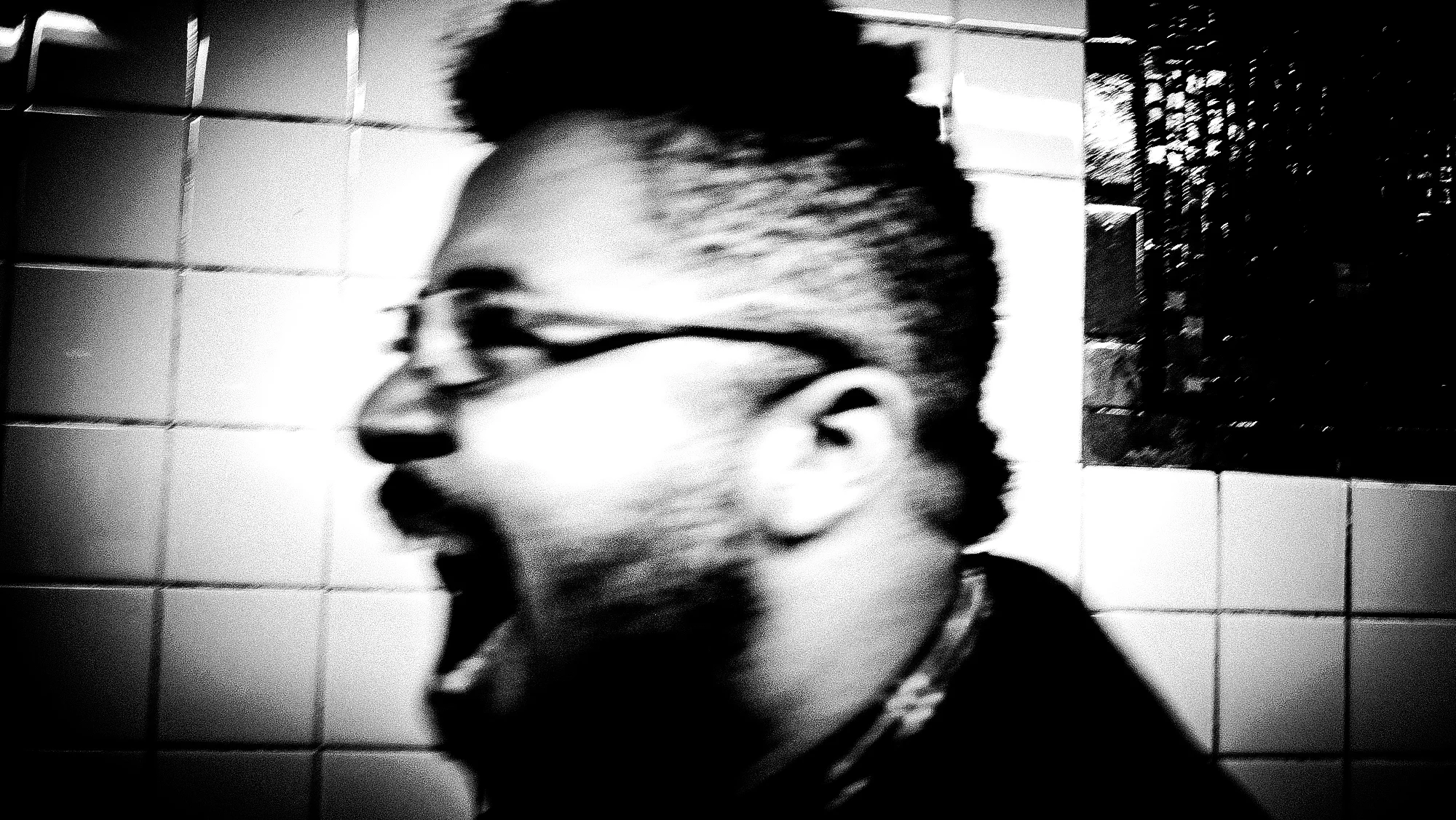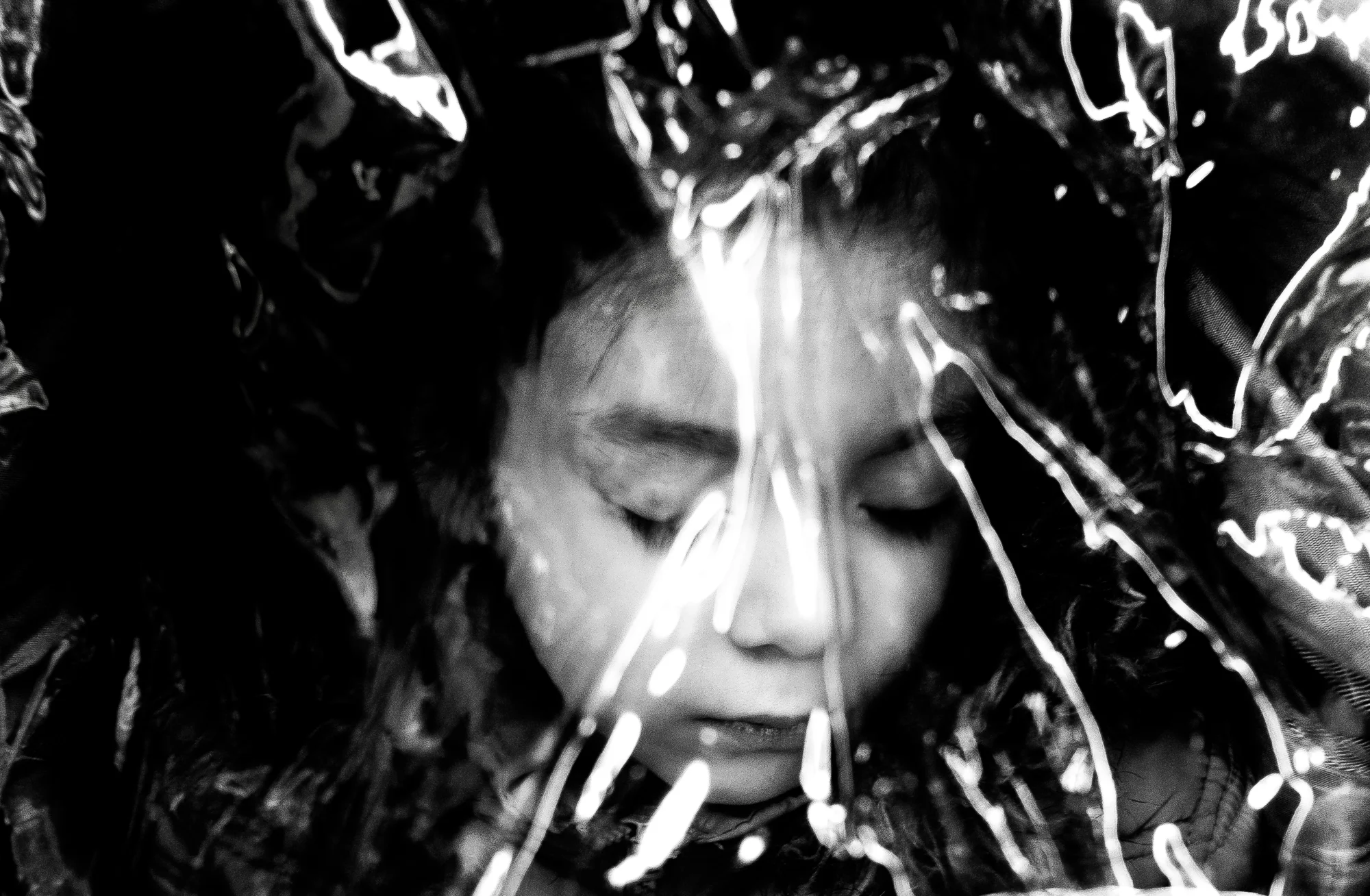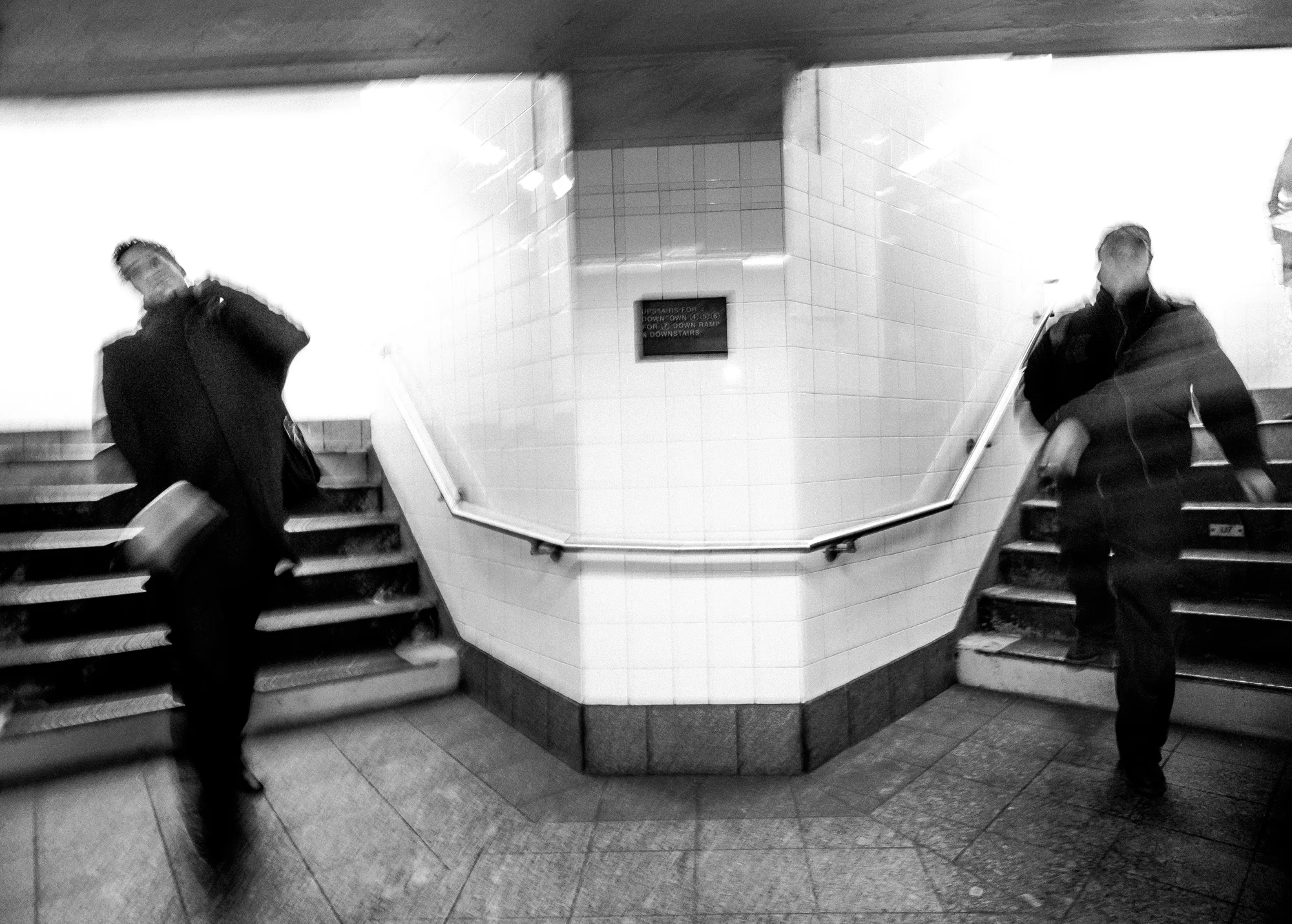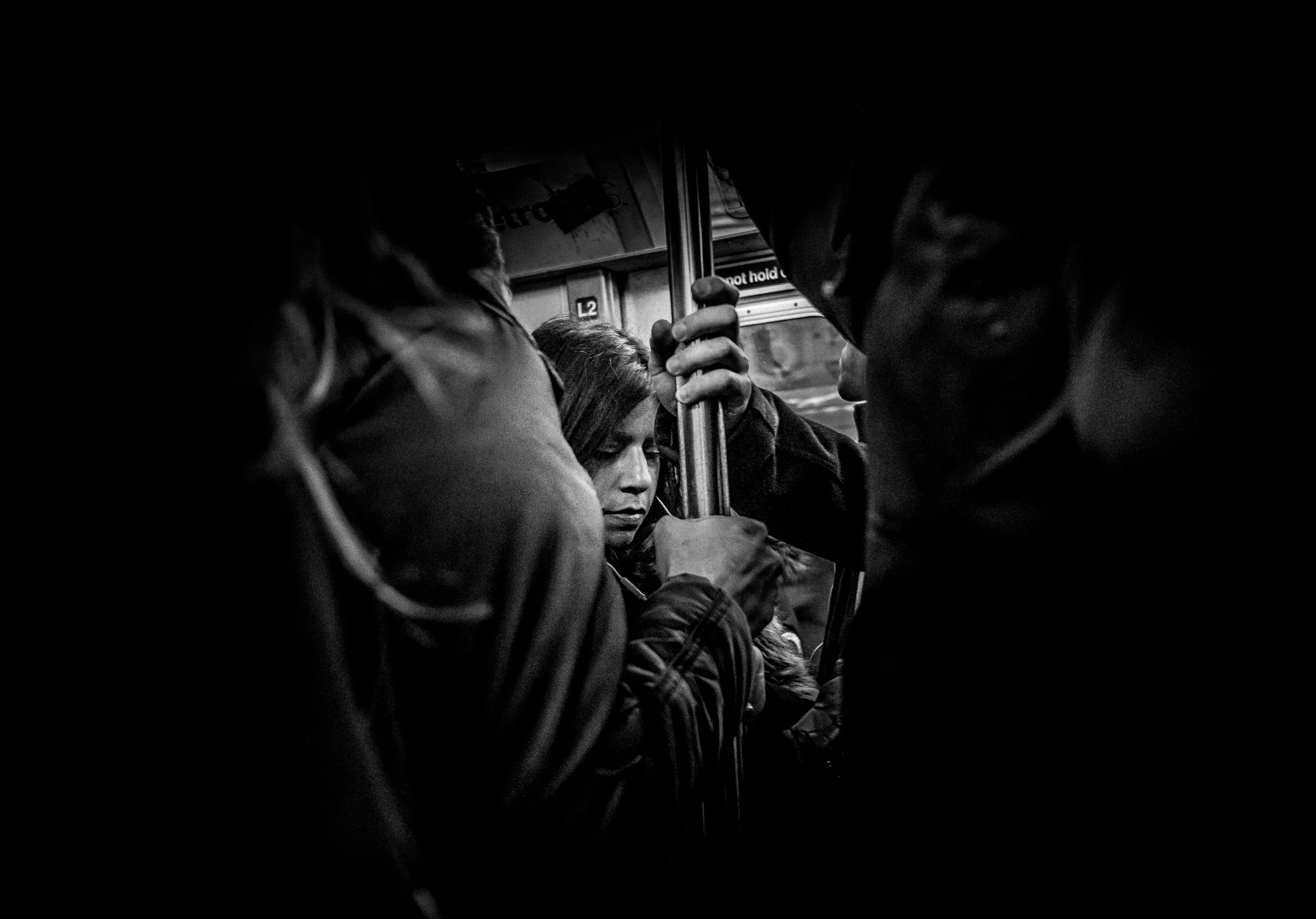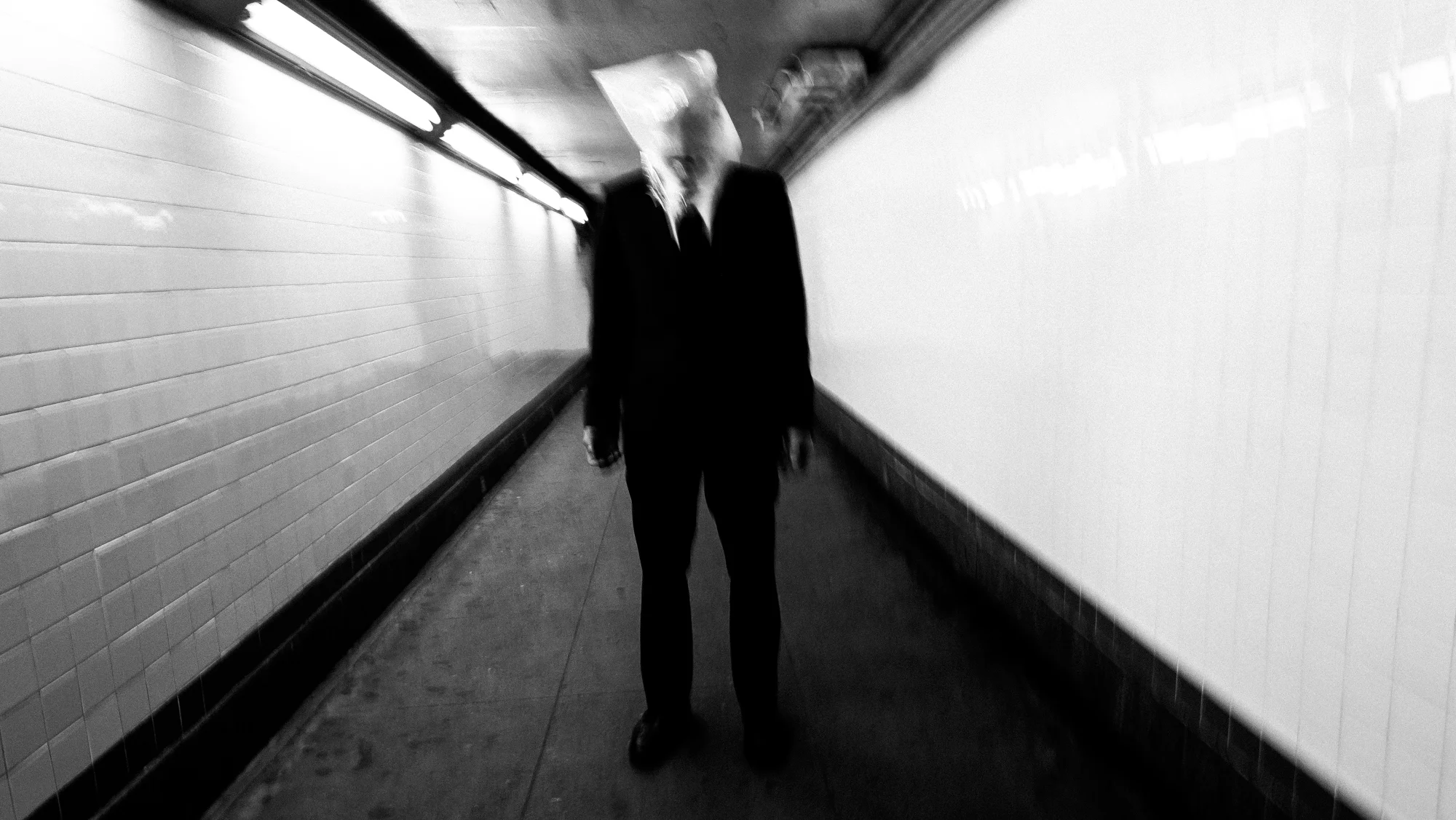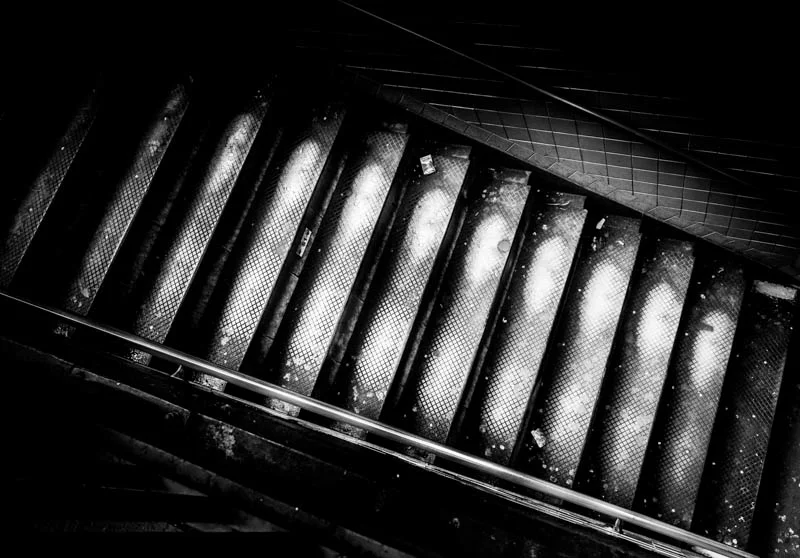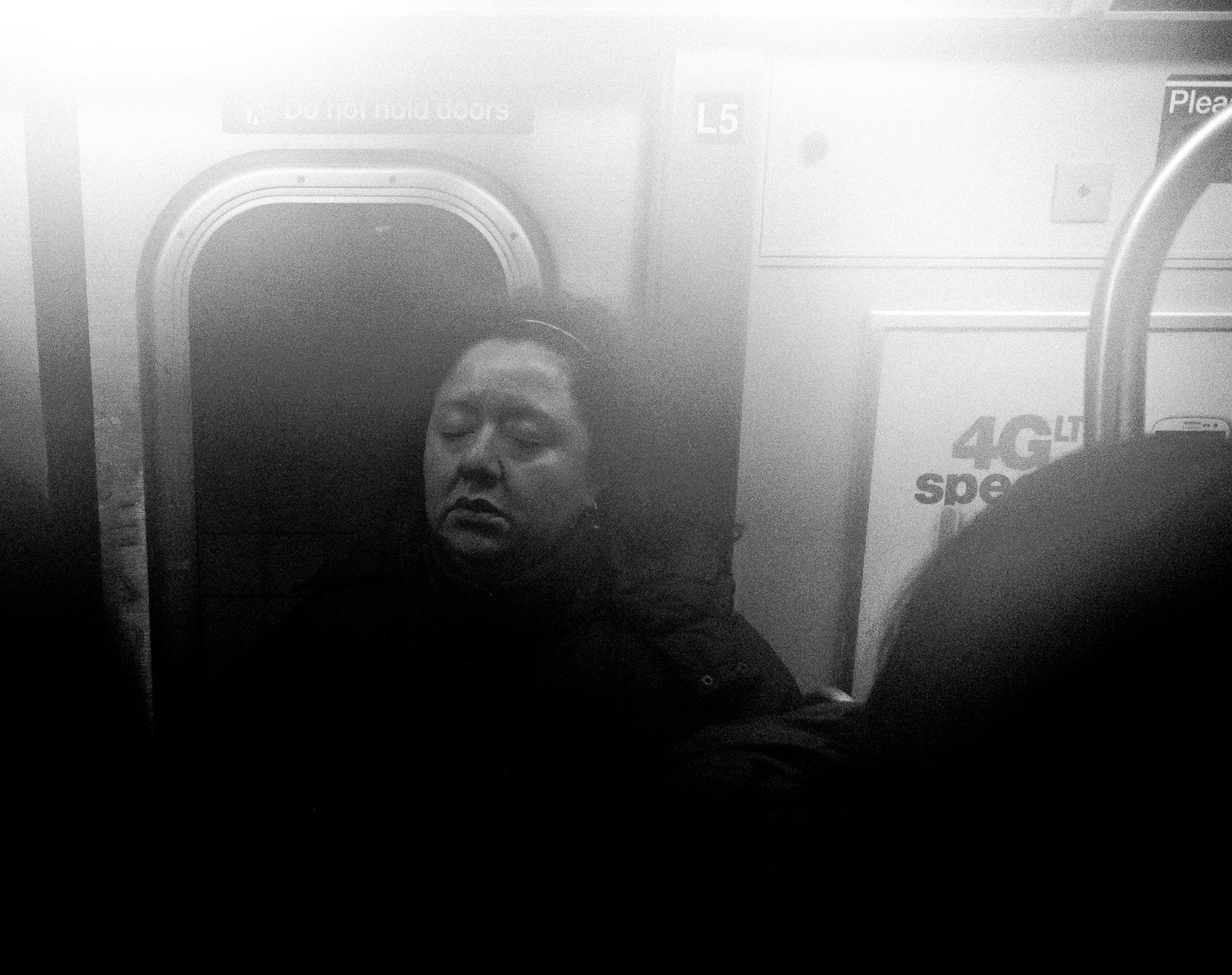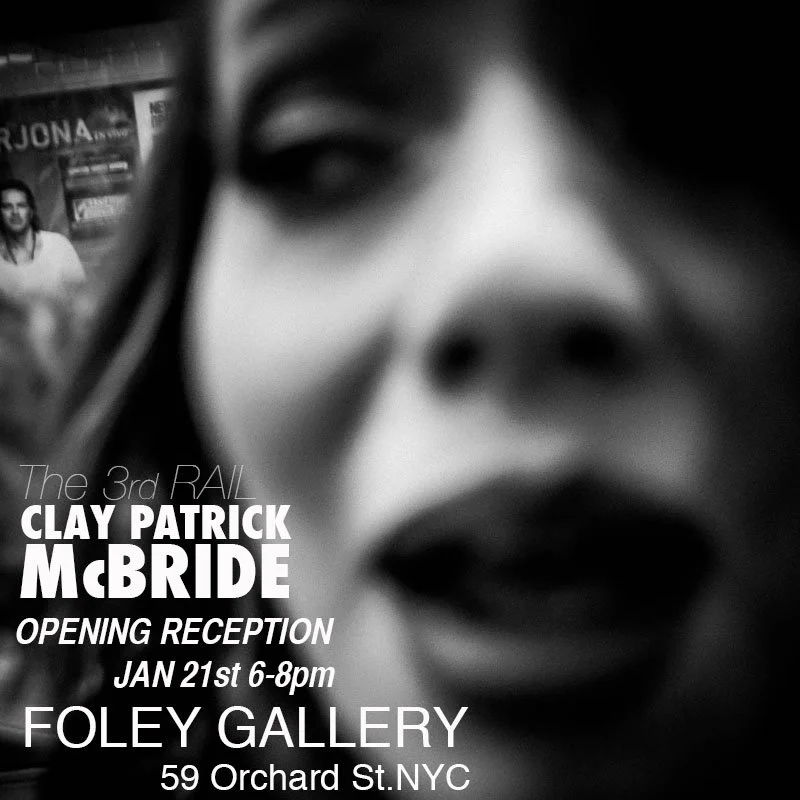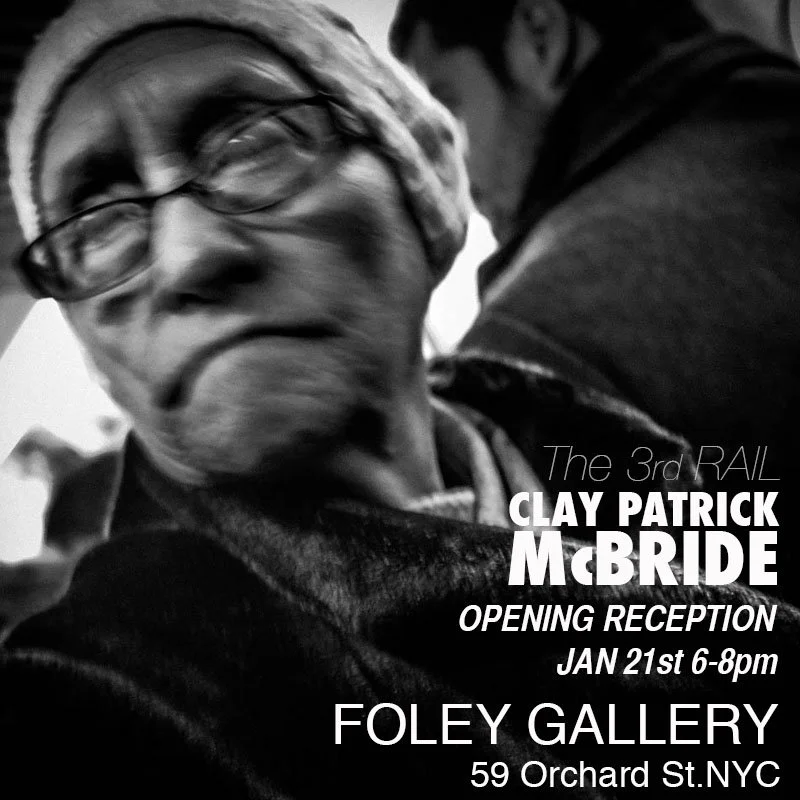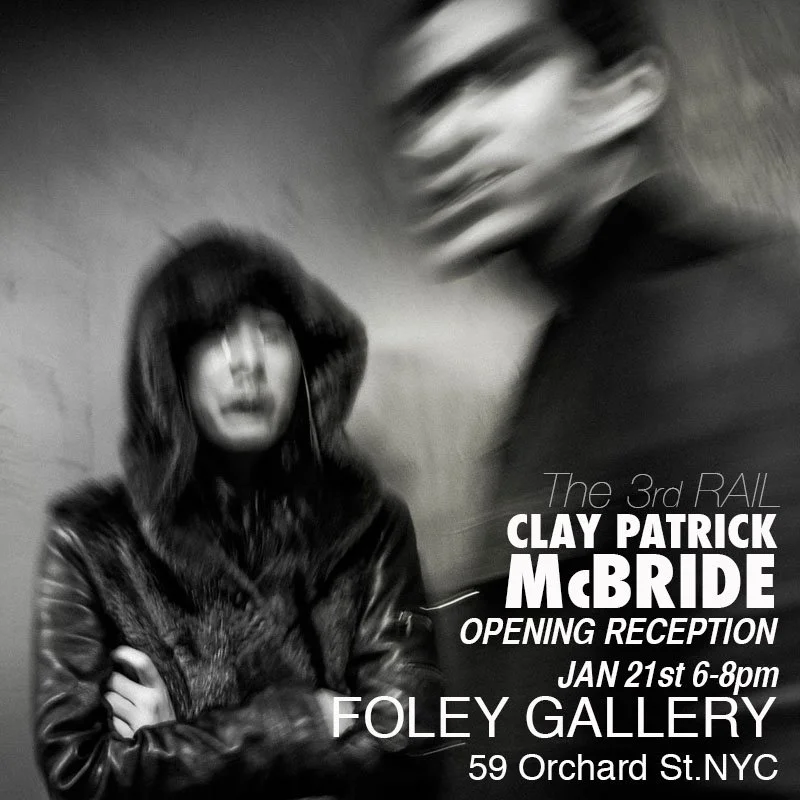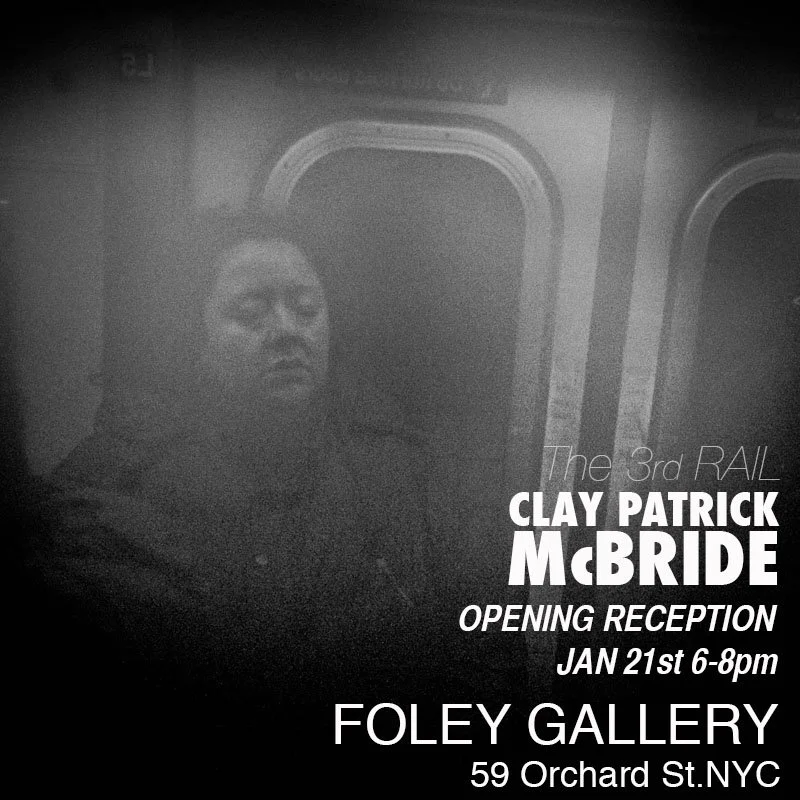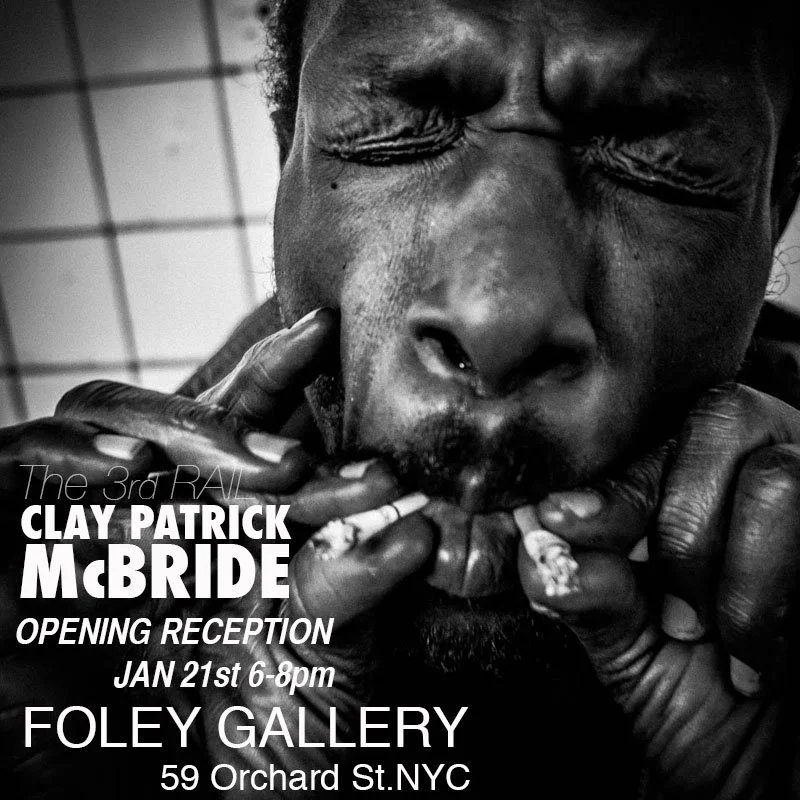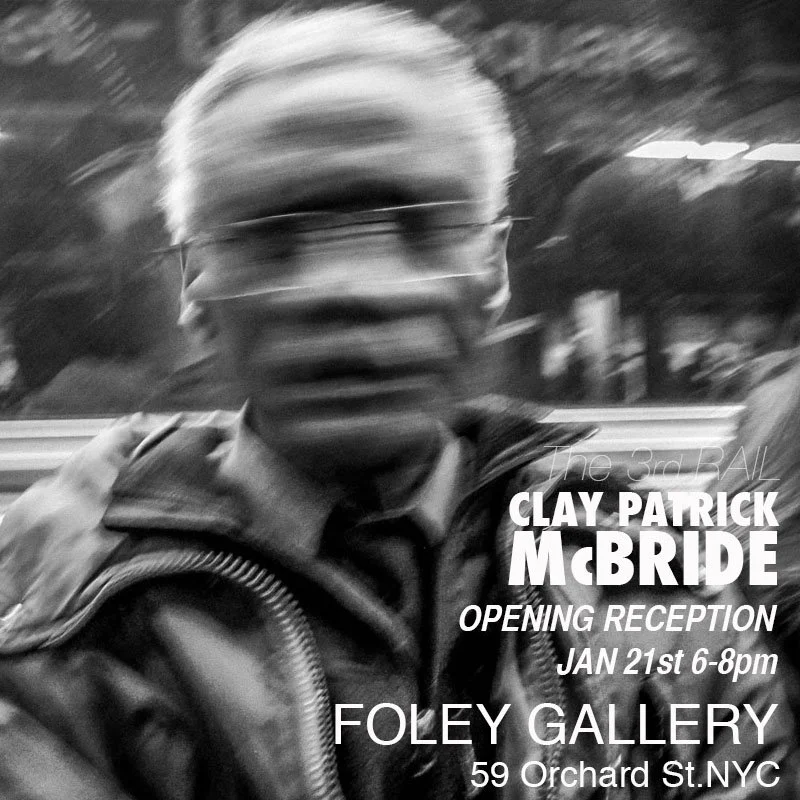3rd Rail
2017 | Mixed Media Installation (Wet Plate Collodion, Transparent Overlays) | Urban underground, subway, subconscious, mythic space
In 2015 I created a layered installation that explores the underground world of the city. It’s a mix of wet-plate photographs and transparent overlays. The main images are old, textured photographs—faces worn by time, rough hands, the feeling of transit. Over these images, thin layers of acetate are added, filled with shadows and hidden details—niches and archetypes that evoke the mythic, cavern-like quality of the subway’s depths. The work invites viewers to descend into this space, to see it as a subconscious realm filled with fears, hopes, and solitude.
The piece blurs space and mind. It pushes into the darkness beneath the city and makes you confront what’s normally hidden. It asks you to feel the quiet chaos, the mythic quality of the underground. It’s a journey into a shadowy realm that’s both real and psychological, meant to shake the viewer and make them think about what lies beneath the surface.
I showed this work at The Foley Gallery on the Lower East Side of NYC. It’s a busy part of the New York art scene, where many of the city’s voices converge. Thousands of people passed by every day, many of them stopped to look, to think. The installation made a strong impression. People saw it as more than just images—something about the hidden depths of the city and their own fears. It became part of the dialogue about urban space and subconscious life.
The work found a wider audience through several channels. In 2017, Clay Patrick McBride spoke about it in an interview with Elizabeth Avedon, published in L’Oeil Magazine. It was an honest talk about how the process and layered overlays evoke chaos, fear, and anxiety in urban transit. Rhandy Rodriguez made a short film about the installation, showing how it was made and what it meant. The video brought a new visual clarity and allowed people to see the process behind the work.
The piece was more than just an exhibition. It attracted crowds in New York. Many visited the gallery. It also became part of an advertising campaign for the School of Visual Arts, showcasing how powerful image and space can be in the city’s underground. Major outlets like the Times Herald Record and L’Oeil Magazine covered the show, spreading its story wide. Articles celebrated the work’s impact and significance, highlighting its ability to resonate with urban life and subconscious fears.
Contemporaries, critics, and collectors responded strongly. Critics praised its power and rawness. Many bought prints, seeing it as a major contribution to urban and documentary photography. The interviews and videos online helped to amplify its reach even further. This project pushed into new territory—layering old techniques with new narratives to expose the deeper mythic and subconscious layers of city life. It speaks to something fundamental about the city’s hidden world and our shared fears and hopes in it.

